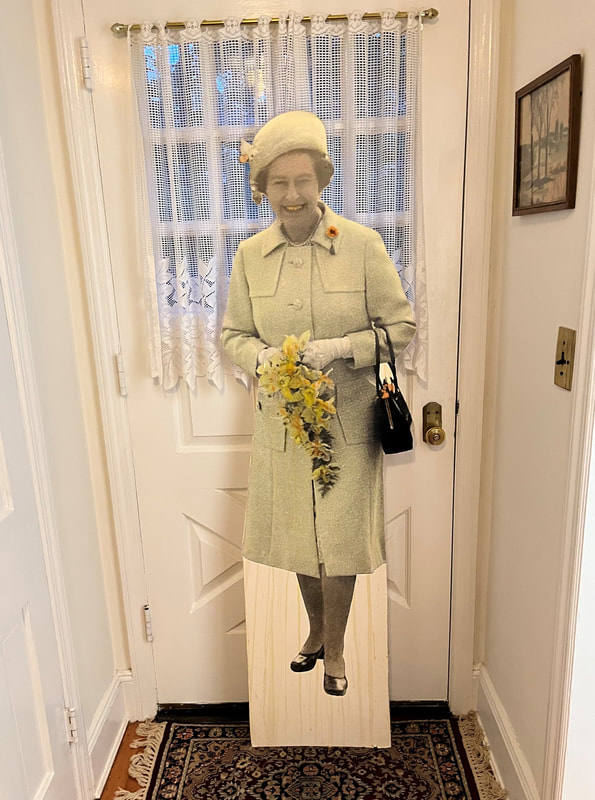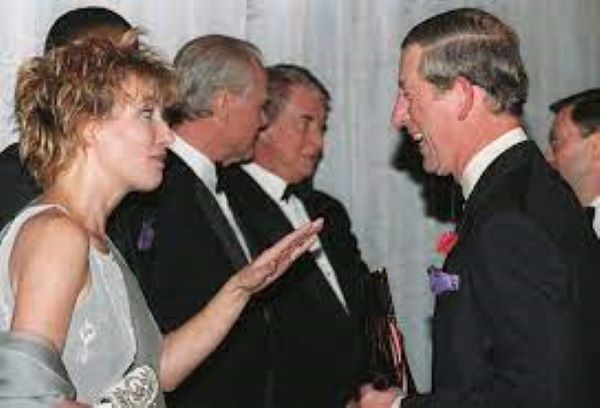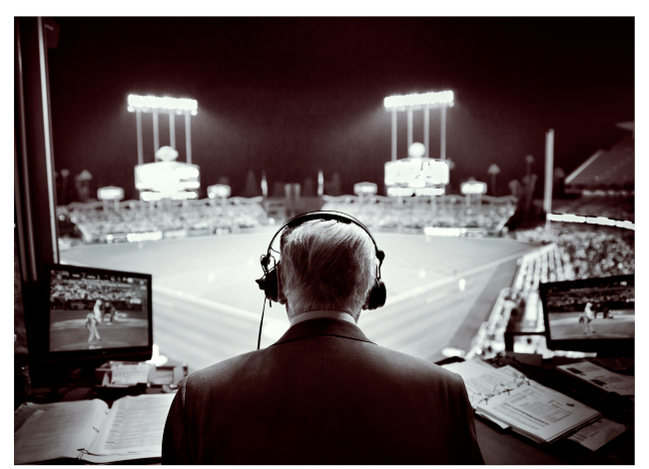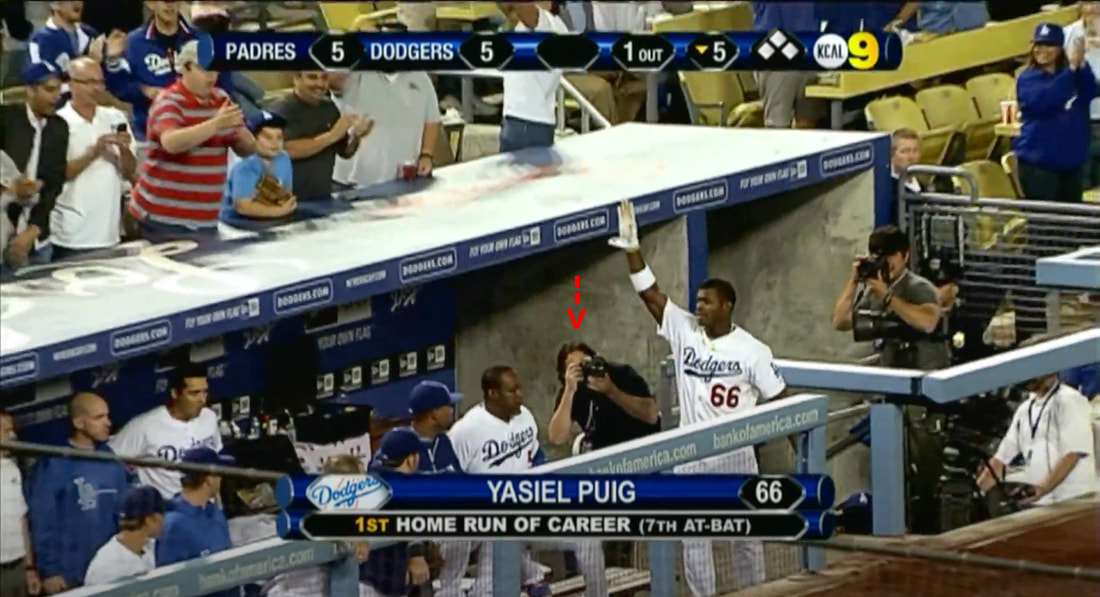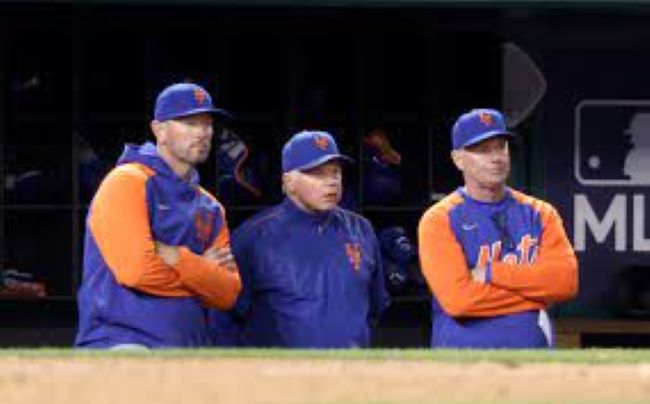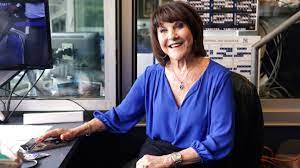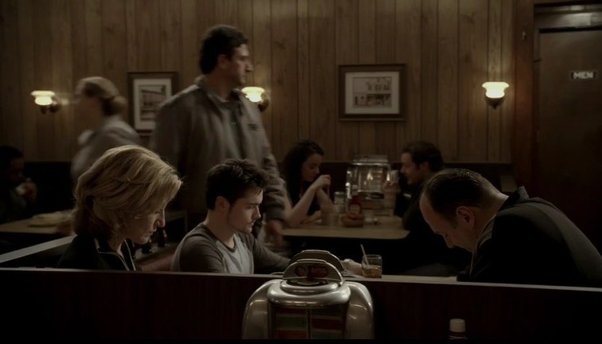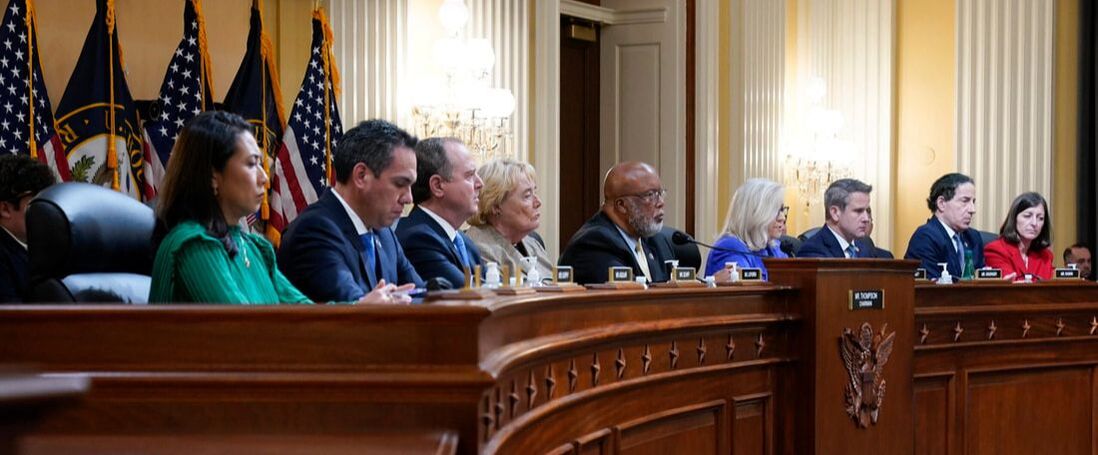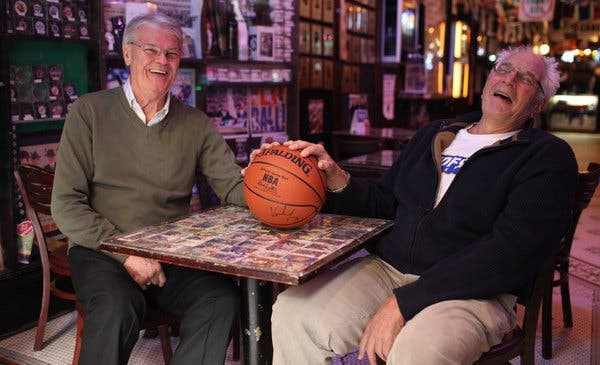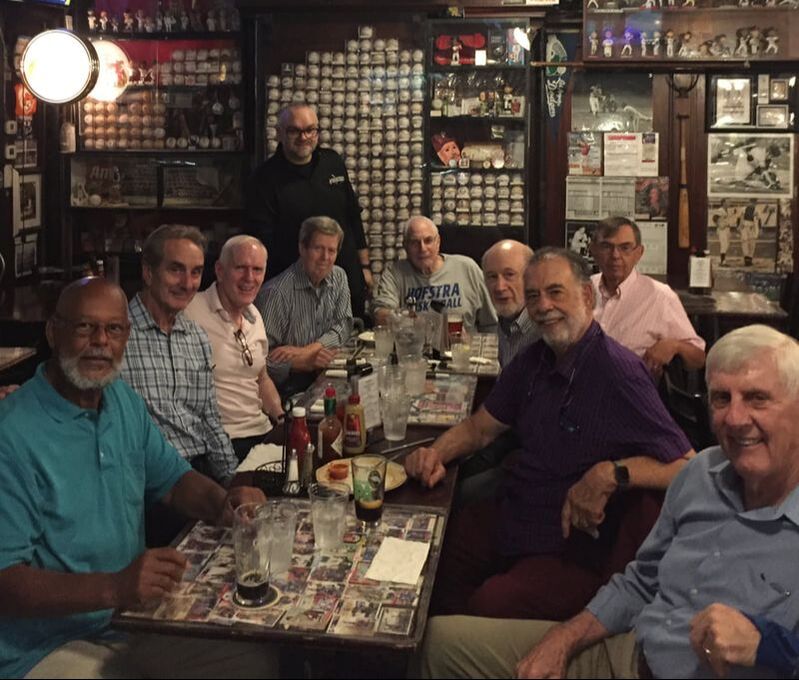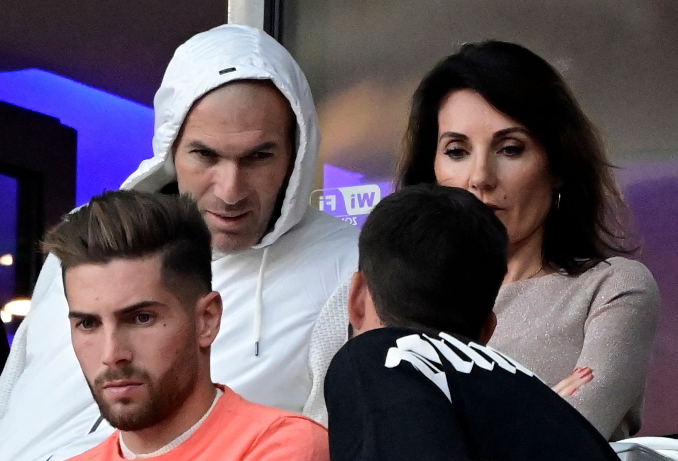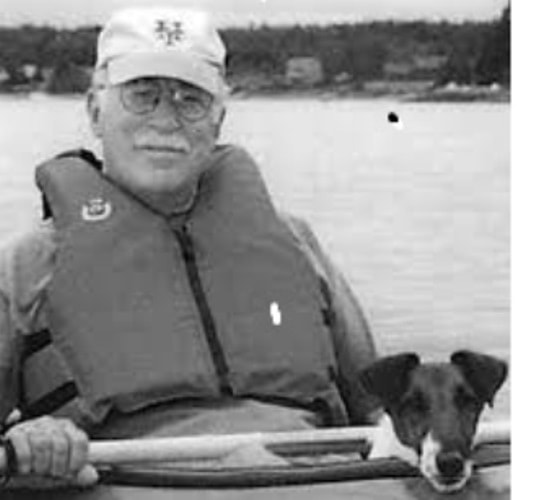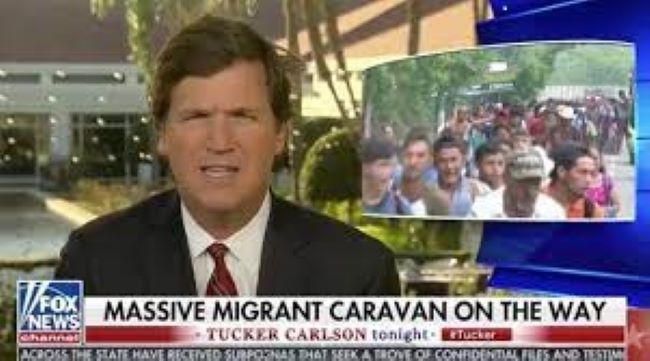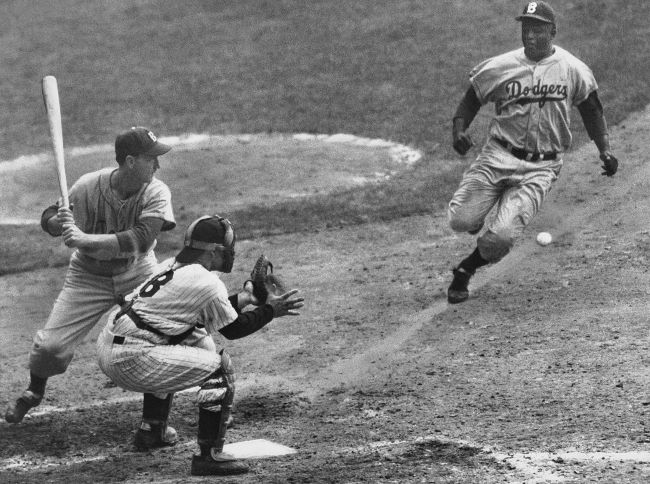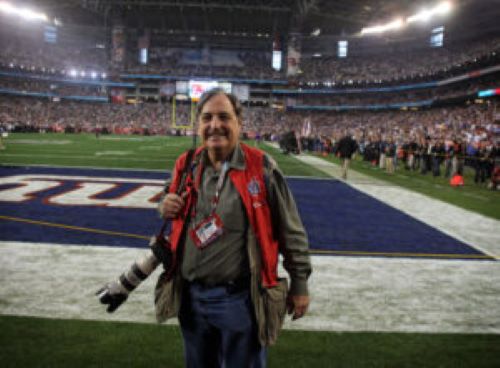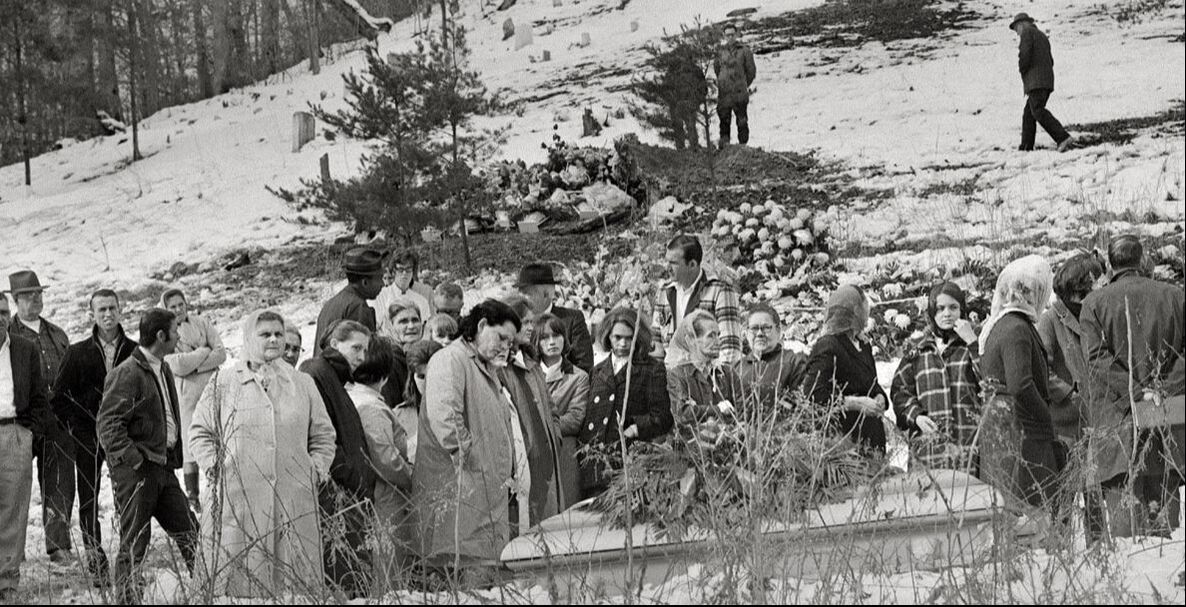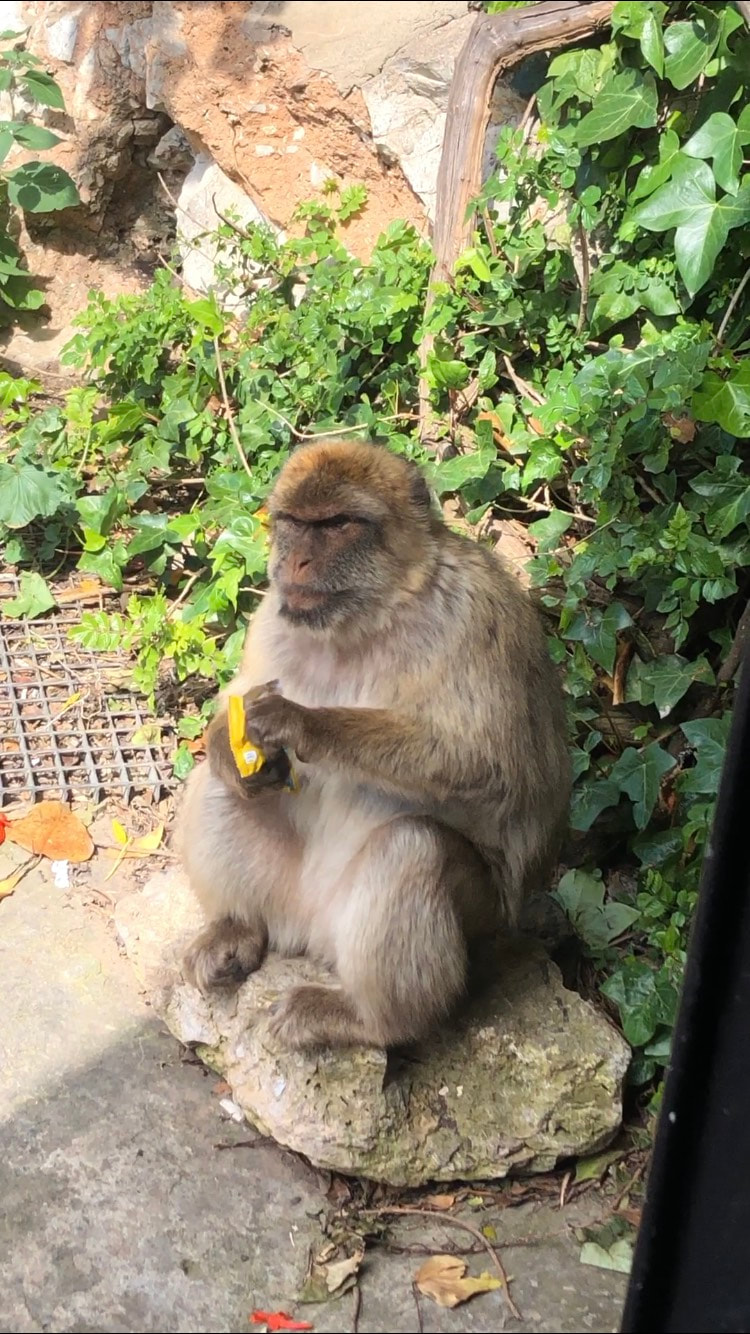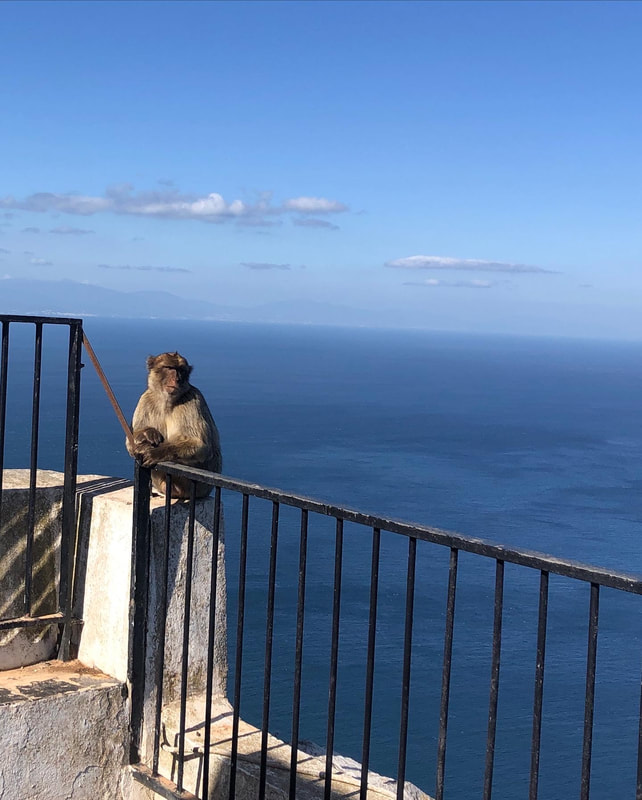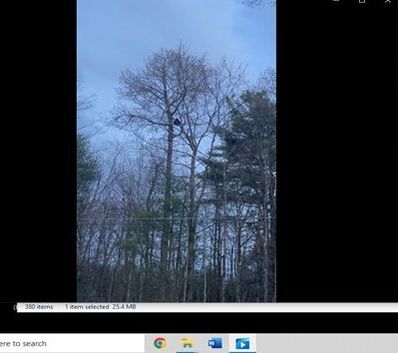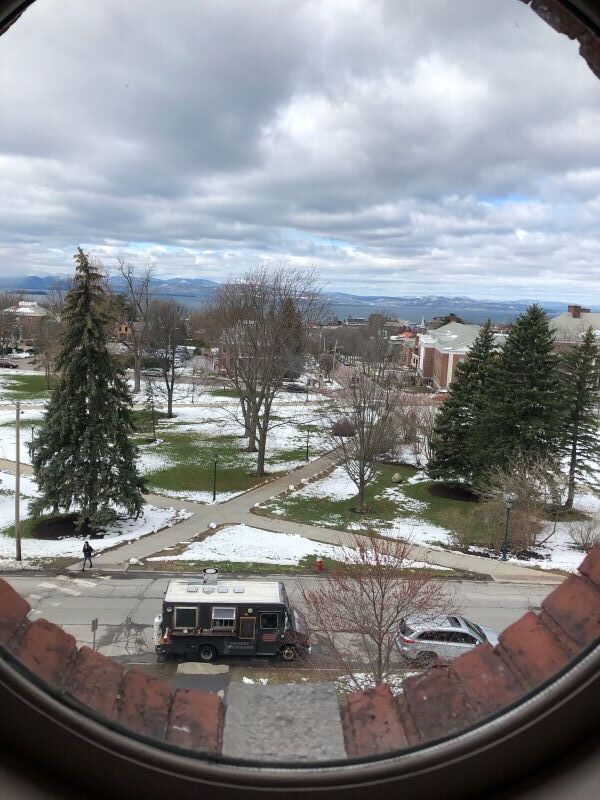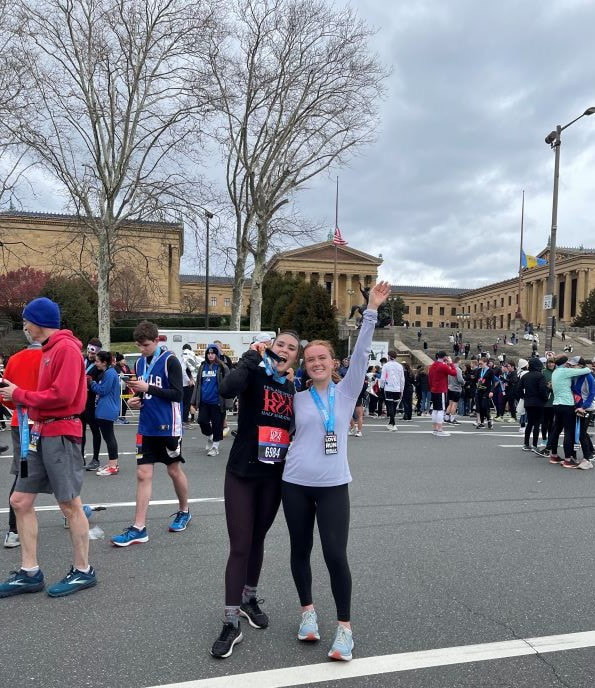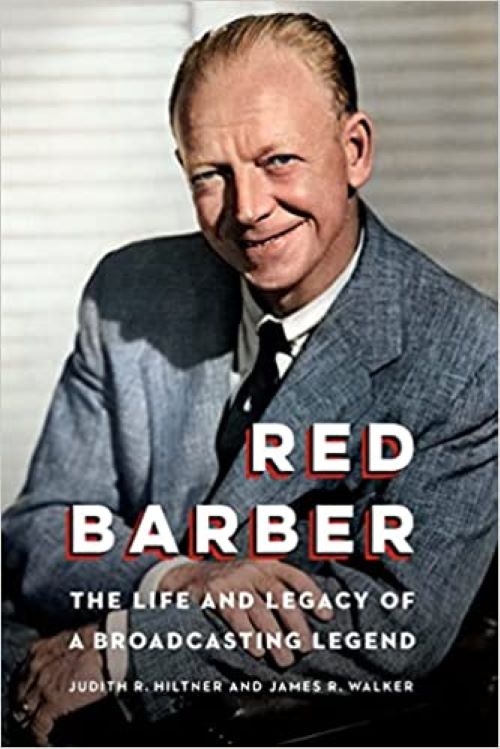|
There’s a story to the larger-than-life cutout. Our friend Rachel had it made up for her commercial work in New York. She also had cutouts of Prince Charles and Princess Diana. When Rachel passed way too young, her sister Miriam offered them to us. Mostly they reside peacefully in our house, but they get brought front and center on occasion, which this most certainly is. *** The Royals have a hold on people. This is apparent from the respectful mourning for Queen Elizabeth II, since she passed last Thursday. Americans seem to be taking stock of how they feel about a monarchy, The Revolution to get rid of monarchy seems like ancient history. My wife points out that in recent years, American television has been full of dramas and documentaries about England, almost as if America were longing for a bit of structure and, dare one say it, manners, after four years of being savaged by rabid Trumpian jackals. Then again, England has a veneer of "royal" manners but they did not stave off the ruinous Brexit or the odious Boris Johnson. The most interesting evaluation of Elizabeth II comes from Bonnie Greer, an African-American writer who has lived in England since 1986 and now has dual citizenship. Greer said Black “church ladies” in America actively respect and imitate Queen Elizabeth’s poise and dress, her purses and her hats, her image of holding things together. *** Both Marianne and I have roots in England that are traceable back to….well, my wife-the-genealogist finds links back to William the Conqueror. Her family traces back many centuries to the Manchester area. Her mother’s father -- born in Massachusetts -- was a gentle, curious little chap you could envision toddling down to the greengrocer or the chemist, in Rochdale or Bury or Salford or Oldham, where his people came from. My wife can trace a chain of her family names, all over the world. My mother was born in England – in Liverpool -- but she would always, always, say, “We were really from Southampton,” where her father was usually posted with the White Star Line, except for a short stint in Liverpool before World War One. Liverpool is known for its scousers – a mix including Irish from just across the sea. I never heard me mum take credit or pride in Liverpool – not even the Beatles. My kid brother Chris confirms my impressions that our mother, who cried when FDR died, admired Winston Churchill, whose middle name was Spencer. That was also my mother's maiden name, and Princess Diana's maiden name, and a frequent middle name in our sprawling family. Our mom was very proud of being British; when an Australian relative came to visit, Mom broke out the best English china -- but Chris doesn't think she was very interested in the royals. *** My wife and I have both been lucky to visit England, sometimes for weeks at a time. It is impossible to visit England without being aware of the monarchy – sometimes in person. *** My wife once spent 15 muddy, drizzly minutes in the presence of Princess Anne, quite long enough to form an impression. This happened via our friend, a Sloane Square solicitor, whose firm did work for the royal family. We stayed with him a couple of years when I was covering Wimbledon, which coincided with the rowing races at Henley. (I believe our friend had been a coxswain at one of the colleges of Oxford, but he is gone now, so I cannot check.) He was a gallant old bachelor who enjoyed squiring Marianne about Henley, on a classically dreadful summer day. They were at a prime reserved table with other connected people – one of them a physician for the Royal Family. As the rain fell, Princess Anne was walking past their table, and she recognized them. They stood up, of course, but with a casual wave she motioned them to sit back down, while she chatted with them. “She had a white hat and a white brocade dress, covered with mud, and she was wearing Wellies,” my wife recalls, using the common British term for the universal mud boots. She was informal and poised, at the same time, my wife says. (This sighting matches my impressions of Princess Anne from my years covering the International Olympic Committee. Princess Anne, once an equestrian competitor, later a member of the I.O.C., had a good reputation as an activist against performance-enhancing drugs.) *** In England, the Royals are on the telly, in the papers and the magazines, always on the brain. My friend Logan thinks he once saw Queen Elizabeth, a mile or so from Buckingham Palace. “I was jogging down Jermyn Street one early Sunday morning,” he recalled in an e-mail on Sunday. “No one around. It’s ‘one way.’ A limo passed by me and through the window I got this very regal wave. I waved back. Am sure it was Her Majesty. Spring of 1987, I think.” I could wonder, wouldn’t the queen have a companion car, smoked windows, bristling security? But what’s with the wave? My theory is, on a quiet street near the palace, early on a Sunday morning, only queens wave. *** I had a royal sighting once, in one of my early assignments to Wimbledon, when the press tribune was directly alongside the Royal Box. Princess Diana was on the guest list that day; we reporters checked her out early and often. Later, I noticed her looking back at us, perhaps wondering about that raffish lot, as we chattered and gestured our way through the afternoon – a fitting Shakespearean upstairs/downstairs balance to the swells in the Royal Box. She should have heard some of the Brit reporters, the Beastie Boys with their lurid commentary, imitating plummy royal accents. I’d like to think she would have laughed. Her two little boys were scuttling around the box, watched by helpers. Their mom was looking around. Her blue eyes were piercing. *** I’ve never observed the new King Charles. Our friend Alastair did a wicked imitation of him, making him sound mopey. (Then again, Alastair lived in Wales and referred to England as “them.”) I read a book that quoted Emma Thompson, a good friend of Charles, about his complexities; she also said he was a good dancer and a good human being. Not all the old-timers wore uniforms at the grand celebration of antiquity. The old players, legends all, visited Queens on Saturday as the tradition of Old-Timers’ Day was honored after a gaping absence of 28 years. How wonderful it was to sit in my home cave and watch Frank Thomas, Jay Hook, Ken McKenzie and Craig Anderson from the first team in1962. They were good people then, helping Casey Stengel create the lovable myth of the Amazin’ Mets. Now, in the very young and very promising era of the new owner, Steven Cohen, the Mets brought back 60 old-timers to stand in for the Richie Ashburns and Alvin Jacksons who toiled so honorably in 1962. Wonderful touch: room on the field for family members representing Gil Hodges, Tommie Agee, Willie Mays and my departed friend, 1986 coach, Bill Robinson. 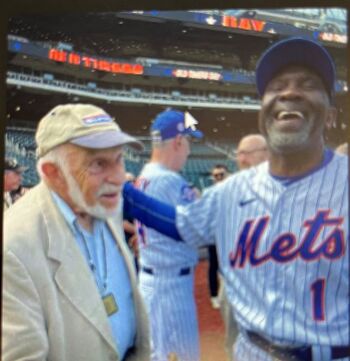 Steve Jacobson and Mookie Wilson Steve Jacobson and Mookie Wilson Mingling with the old-timers was my friend Steve Jacobson who helped cover the first season for Newsday and starred as columnist for decades. Steve, going on 89, was welcomed by Jay Horwitz, the haimish maestro of Mets alumni affairs, who also invited me as a surviving veteran of 1962. But I’m still ducking public gatherings during the pandemic, so I stayed home and waited for Steve to call me with the gossip. Steve said he wished he could have chatted with all of them, but there was such a crush, everywhere. He could have talked to Frank Thomas about hitting 34 homers and driving in 94 runs, and Ken McKenzie, who had the only winning record (5-4), and Craig Anderson, who won both ends of a May doubleheader over the Milwaukee Braves to raise the Mets’ record to 12-19 and cause manager Bobby Bragan to call the Polo Grounds a “chamber of horrors.” Oh, yeah. The Mets promptly lost 17 straight, en route to a 40-120 record. Steve also could have talked to Jay Hook, with his engineering degree, who won a game one day and told the writers it was like eating sour cherries but then tasting a sweet cherry. (All three 1962 pitchers present Saturday were part of Casey’s respected “University Men” – McKenzie from Yale, Anderson from Lehigh and Hook from Northwestern.) 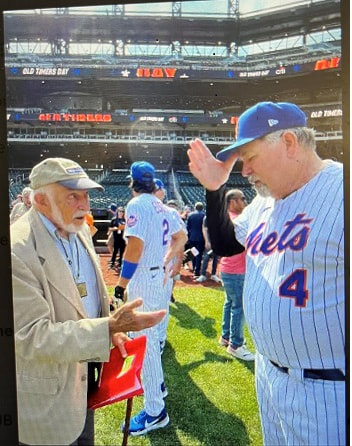 Steve Jacobson and Ron Swoboda Steve Jacobson and Ron Swoboda Steve did have time to mingle on the field, wearing a Newsday ball cap, with his wife, Anita, snapping photos of him with epic Mets including Ron Swoboda and Mookie Wilson (who later would gambol in the outfield in the old-timers’ game, along with another sleek alum, Endy Chavez.) The part that Steve treasured most was having a few old Mets tell him he had been one of those sportswriters who did not throw them under the bus when they had a bad hour on the field. We were reporters, we were critics, but we were not rippers. Now the Mets are in a new era. Steven Cohen, a grown-up Mets fan, used his money to hire Billy Eppler, Buck Showalter, Francisco Lindor and Max Scherzer. Who knows if the Mets will hold off the Braves and go far in the post-season? But gestures like the recent Keith Hernandez number-retirement and Willie Mays number retirement (honoring the jolly first owner, Joan Whitney Payson, indicate a generosity of pocketbook and heart. (Speaking of not throwing people under the bus: a few old players and writers and fans have blasted the previous ownership of Fred Wilpon and Saul Katz for not putting enough money into the franchise. I have a friend who ran a center called Abilities, Inc., on Long Island, which helps people function better in work and social life. I am told that the Wilpon-Katz family was generous with money and energy.)
Let's just say: the Mets are in a new era. I was happy to hear my friend Steve Jacobson bubble about his hours back at the ball park with similarly elderly Mets who once upon a time gave the fans so many memories -- some of them even good. The other day I was writing about Dominic DiSaia, and his photo of Vin Scully, and I mentioned photographers I ran around with, back in the day. One of them is John McDermott, who bonded with me on the soccer beat and also at the 1994 Winter Olympics in Norway. Speaking Italian fluently, John charmed our way into the Italian hospitality tent up on an icy mountain plateau, by offering some of my NYT souvenir pins (“distintivi”) -- pure gold at the Olympics. The food was great, as one might expect, and so was the scene when Alberto Tomba, three-time Olympic gold medal ski racer, slowly checked out every table, like an entitled don in one of the Coppola masterpieces. (Oh, yes, that was Roberto Baggio's voice on John’s cellphone.) John McDermott – originally from Philadelphia -- gets around; he loved San Francisco for decades, riding his bike and hanging around with locals like Dusty Baker, but six years ago he moved to Italy with his wife, Claudia Brose, originally from Cologne. They live in Appiano, in the northeast corner of Italy, where German and Italian intermingle, but lately the couple has been making forays to Naples for the ambiance. Claudia has a business conducting photography seminars, and John demonstrates the art of street photography in one of the most vital cities on earth. In Naples – Napoli --- English or northern RAI broadcast Italian only go so far, but in Napule life is often conducted in Neapolitan, not so much a dialect of Italian as a Romance language, endangered, to be sure, descended from Latin. John enclosed a link to a video he put together, using his photographs, backed up by the song by Pino Daniele raised in the Spaccanapoli district, who died in 2015. What draws John and Claudia back to Naples? "The warmth, energy and openness of the people, the chaos and the way everything just works out," John wrote the other day. I get it. My first foray to Naples was in 1970 when my wife and I took our three young children around Italy, the most child-friendly country I know. I went back in 1989 to work on a Times magazine feature on Diego Maradona, the Argentina soccer star who played for the Napoli club – a perfect spot for the flawed athlete. Maradona defied the club’s attempt to set up an interview, even when the club driver took my to Maradona’s villa at the top of the old Greek hill area, Posillipo. I called the number I had for him and somebody messed with my mind, leaping from Spanish to Italian and back. And when I went to a club practice Maradona did not show up that day, leaving his coach sputtering and fuming. Tough town. I realized this at the Napoli club match that Sunday. As I made my way to the press tribune, my guide nudged me under the overhang – just before a wadded cannonball of wet tissue splatted against the wall, like a baseball, where I had been standing. The “ultras” in the stands surely had good aim. Next time I visited Naples was at the 1990 World Cup when Argentina was defending its 1986 title. While I was working, my wife meandered down to the harbor, with life pulsing in the shops – at least until a couple of older ladies wagged index fingers and warned, “Signora, Signora,” and motioned for her to hide the bracelet on her wrist. The local lads were quite adept at snatching jewelry from tourists, they signalled. The pre-teens of Naples are known as “scugnizzi” – urchins – a matter of civic pride. Sit at an outdoor café and a scugnizzo will try to sell a few loose cigarettes, as a way of getting closer. Oh, yes, tough town. Maradona, local hero, played to the Napolitani by urging them to root for his Argentina team when it played Italy in the semifinal. His words, as John McDermott recalls them, were, “364 days a year they call you “terroni” -- an Italian pejorative term for southerners. “Today they want you to be Italian. Don’t be fooled by them. We are your team! You belong with us!” Maradona’s brazen appeal was rewarded with a victory over Italy, but Argentina lost the final to West Germany. He’s gone, now, a victim of his excesses, but Diego Armando Maradona is the flawed patron saint of Naples. As John and Claudia wander through the tangled, pungent streets, they see his likeness everywhere -- the man who found his spiritual home.  “It’s dirty and chaotic and sometimes nerve-wracking,” McDermott wrote me. “But it is also a constant, vibrant, non-stop show of real life lived out in public.”
John expands on his love for Naples in this link: https://aphotoeditor.com/2022/04/14/the-art-of-the-personal-project-john-mcdermott-2/ As I work my way through John’s photos, I can hear, can smell, and surely can see the pulsing life in the alleyways of Naples. *** Long live the photographers who take us to these places. *** The NYT – the former gray lady – now lavishes color photos on its subscribers. Did you see this recent masterpiece on Budapest? https://www.nytimes.com/2022/08/15/travel/budapest-hungary-memories.html When Vince Scully died, I was honored to get a call from the Times, asking me to write a column from the perspective of my youth as a Brooklyn Dodger fan. When the paper arrived in the driveway the next morning, my column was accompanied by a lovely photo of Vin Scully, from behind, as he called a night game at Dodger Stadium. (The bizarre thing is that the photo was not included in the copious spread on Scully in the great nytimes.com obit spread on the website.) The photo by Dominic DiSaia perfectly demonstrated the link between Scully and his fans since the Dodgers moved to LA in 1958. (I’ve gotten over it; oh, yes, I’ve gotten over it.) The photo in the glowing night demonstrated the link between a grand franchise and the mellow, knowing, professional voice of Vince Scully. The fans in Dodger Stadium are one thing, but the audience “out there” is also tangible. We saw the stadium and sensed what was beyond, from the back of Scully’s fertile head. So that left me with a question: who is Dominic DiSaia and how did he take the photo of Vin Scully from behind? Let me pause and say that I have a career’s worth of partnership with the many great NYT staff photographers as well as free-lancers, stringers, most notably Ken Murray, an artist who roamed Appalachia with me in the early ‘70s. I got to know the work habits and minds of photographers. Dominic DiSaia, I learned, is an independent photographer, 47, raised in Southern California, based in LA. He does commercial and advertising photography with a major in sports. In 2013, he proposed a project for ESPN about a day in the life of Vin Scully. He got approval but in a limited way – no photos at home, only at Dodger Stadium, and nothing during the game. “He wasn’t too thrilled about it,” DiSaia told me over the phone, a note of admiration in his voice. “He was a very private man.” DiSaia did learn that Scully would call his wife now and then from the booth, also off limits to the photographer. DiSaia snapped away, when he could, and then he got lucky. One of the aides in the broadcasting booth area told him that the seventh-inning stretch was a bit longer than normal breaks, and he let DiSaia slip into the aisle behind the broadcasters. There he learned something I have never heard about any broadcaster before: Scully kept a Jolly Rancher candy on his desk and would suck on it – the same one -- between innings – to keep his mouth moist. But he would not drink anything during the game so he could not feel the need to use the men’s room. Vin Scully was, along with all his other traits, disciplined. With only a few seconds of access, and not wanting to get in Scully’s field of vision, DiSaia stood behind Scully and saw the big picture – the broadcaster and his audience, in the stadium and wherever that broadcast went. As the Dodgers began batting in the home half, DiSaia snapped away, and then slipped out into the corridor. As it turned out, this was an epic night at Dodger Stadium. Yasiel Puig, from Cuba, hit his first two homers, and DiSaia happened to be in the photographers’ well alongside the dugout, and another photographer caught DiSaia a few feet from the new hero, as the crowd cheered. Later, DiSaia learned, Vin Scully, always alert, said: “Viva Cuba! Viva Puig!” Terse and perfect. After the game, DiSaia caught up with Scully for the promised wrapup photo, in the parking lot – but true to his private bent, Scully did not want a glimpse of his actual ride home – a hired driver, because by that time Scully was not driving at night. So Scully went off into the night, and DiSaia polished his photo essay for ESPN. Scully must have liked the photos because he signed a copy and included it in a cache of souvenirs that he sold to bulk up the college fund for grandchildren. DiSaia does retain rights to the photo, and has a print available at: https://dominic-disaia-photographs.square.site/ He also has a website: www.DominicDiSaia.com After that night in 2013, DiSaia continued to work in sports around LA, but as for Vin Scully: “I never saw him again in person.” How often do journalists say that about the epic person they met on a memorable assignment, and never again. DiSaia retains a respect for Vince Scully that matches the worldwide impression – a master artist who knew his audience and himself, as he faced out into the night, and into the ears and hearts of ball fans everywhere. We all need a momentary diversion from the 10 or 12 top terrors loose in the world.
The Mets do it for me -- playing a brand of ball I thought had gone out of style. As of Monday morning, they were tied with the Yankees for the best record in baseball. Nothing like big-market money. I think of all the years when I worked at appearing professionally neutral. Now that I am retired, I am free to watch the Mets – with two separate Met-centric smartphone message dialogues going at the same time. The Mets are so much fun to watch because they are defying the launch-angle, exit-velocity analytics trend that has rendered contemporary baseball so stultifying. It can be done. The Mets of recent years had the same bad habits of other teams – trying to put the ball over the fence and get their moon shots on TV and social media. Managers came and went – good grief, one general manager was a reforming player agent -- but New York money-guy Steve Cohen bought the team and brought in Billy Eppler as general manager and hired Buck Showalter as manager and now the Mets hitters are humbling teams with their lopsided shifts, hitting it where they ain’t, in the immortal phrase of Wee Willie Keeler. Jeff McNeil once was lost but now he’s found – propelling a home run now and then, when it comes naturally, with his good swing. Showalter is doing one of the most noticeably great managing jobs I have seen in a long time. I’m happy for him. Met him the winter before he took over the Yankees, a boy manager who had impressed Billy Martin with his knowledge as a fringe coach during spring training. Now he was getting his chance. I flew into Pensacola one morning in mid-February of 1992 and he drove me to his old neighborhood, more Alabama than Florida, introduced me to his pals at the gas station, in a town where his late father, a former Little All-American fullback and a high school principal-coach, was a legend, and then we stopped off to meet his mom. Ever after, when I was around his team, Buck he would point to me and say, “There’s George, he’s been to my hometown, he understands.” I wasn’t always sure what I understood, but, sure, Buck, sure. These days, he is a master at work in his dugout, intense, obsessive, usually with bench coach Glenn Sherlock at his side, as a sounding board. Have you ever seen coaches more alert, more pro-active, than Wayne Kirby (social director at first base), Joey Cora (performing acrobatics at third base), Eric Chavez (hitting coach, smiling reassuringly in the dugout) and Jeremy Hefner, (pitching coach, foxlike, alert to every nuance of his charges?) During the game, Showalter conducts little seminars with lifers like Max Scherzer and Francisco Lindor, while popping sunflower seeds into his mouth and making snarky comments to the umpires. Old school. Buck neglects nobody. He gets players into the lineup, before they get too rusty. He benched Mark Canha for a few days after the Mets spent more of Steve Cohen’s money for Tyler Naquin, and on Sunday Buck put Canha back in the lineup, and of course the pro responded. And for those hard-core fans, who spend their hot summer days and nights peering at the tube, it’s been a pleasure to watch the pitchers holding the Mets together when Scherzer was hurt, when Jacob deGrom was recuperating. The past week, those two aces have been back, as good as ever. Buck tried to nurse deGrom through the sixth inning on Sunday until Dansby Swanson broke up the no-hitter with a two-run homer and Buck nodded and gave deGrom the rest of the day off. It is a memorable season for Edwin Diaz, reviled in his first season in town, now having the best relief season ever seen – entering to the stirring trumpet music. On Friday Showalter recognized this was August, and they were playing the Braves, so he asked Diaz to pitch two innings and received six outs of Koufaxian brilliance. Luis Guillorme – once known primarily for having caught a wayward bat (the baseball kind) in the dugout – has been so good that Buck uses him in most days. day. Along with the Diaz entrance, the best show on the Mets is Guillorme and Lindor playing Marquis Haynes and Goose Tatum (ask your grandfather) with the ball as they trot off the field at the end of an inning. And I haven’t even mentioned Pete Alonso…or Starling Marte….or Brandon Nimmo…the other pitchers. (I am also taken with Carlos Carrasco, and his El Greco-painting serenity.) Entire odes could be written about the Mets -- and sometimes are, on our smartphone links-- during this compelling season that gives us a rest from all the other stuff. When I covered Appalachia from a home base in Louisville, some of the grand leaders of Appalachia had a suggestion for me: why not live in Whitesburg, the center of the universe?
They had a point – “they” being Harry Caudill, lawyer and writer, and Tom and Pat Gish, who put out the great weekly newspaper, The Mountain Eagle (“It Screams.”) Those grand figures of the Kentucky mountains both lived in Whitesburg, in Letcher County, current population 2,200. Also in Whitesburg was Appalshop an invaluable repository of the images and words and sounds of mountain people, mountain culture, mountain history. (See Randolph Fiery's tribute to Appalshop, Comment No. 9.) Now Whitesburg, and Appalachian history, have been crushed by the floods that have marauded through Eastern Kentucky in the past week. The floods have spread mud over every inch of the treasures of Appalshop. I am sick. Here's the NYT article. Fifty years ago, that might have been me writing it. https://www.nytimes.com/2022/08/04/us/kentucky-flood-appalshop-archives.html?searchResultPosition=1 I have already written about the stricken counties and given three general funds. (below) How can I tell anybody to prioritize a center of history against hospitals and food drives and housing centers? I only know that Appalshop is special, representative of the world that is being washed away because most elected public officials and industry (Here’s looking at you, Commodore Manchin) pay no attention to the region they helped dig up. Here’s a link for Appalshop. https://appalshop.org/news/appalachian-flood-support-resources Now back to our previous disasters: *** In my first month on a new job covering Appalachia, I happened to be nearby when the mine blew up on Dec. 30, 1970. I drove until I found the narrow road leading to the site where 38 miners had been killed in the dog-hole Finley mine at Hyden, Ky. Around 8 or 9 PM, I noticed a Red Cross truck, with long lines, and I waited my turn for, as I recall, a cheese sandwich and a coffee, for which I was extremely grateful. The Red Cross was there at other disasters, like the one at Buffalo Creek, W. Va., on Feb. 26, 1972. People have to eat, in all those isolated towns, most of them on bottom land, inundated by the downpour and the disintegrated hillsides of Appalachia. In the latest horror story, good people and good organizations, are feeding the flooded mountain hamlets of Eastern Kentucky. The Red Cross is there, because it always is. https://www.redcross.org/donate/disaster-relief.html/?cid=disaster_brand&med=cpc&source=google&scode=RSG00000E017&gclid=CjwKCAjwlqOXBhBqEiwA-hhitORr5j455Wf9c-eU79JiSEfjnvHknssybFb8oyhktMRnu0So8boHfxoC4qkQAvD_BwE&gclsrc=aw.ds Kentucky is lucky enough to have a thinking, feeling governor named Andy Beshear. Only last December, a tornado hit Western Ky, and he set up a special relief mission. This week Gov, Beshear set up another relief mission in the eastern part of the state: https://www.pbs.org/newshour/nation/how-to-help-flood-victims-in-kentucky Also present is the World Central Kitchen, run by the Washington, D.C. chef, José Andrés. It seems he is everywhere – most recently in Ukraine – and I am not surprised that within hours workers and volunteers were somehow getting to the inundated towns, preparing hot food, good food. https://wck.org/en-us/news/kentucky-flooding I would urge a contribution to any of these funds. I take this disaster personally because this flood has brought up the same towns (Hazard, Troublesome Creek, Isom, Viper, Cutshin, Fisty…) and the same family names I saw on mailboxes in clusters along the highway (Amburgey, Webb, Sturgill, Stamper, Estep). Death and disaster introduced me to Appalachia, and now death and disaster focus my attention, again. The climate continues to grow worse and so have the senators from Kentucky -- people like Mitch McConnell and Rand Paul. Neighboring West Virginia has the coal-dealer, Commodore Joe Manchin, doing something for the good of others only when it profits him. (The Senate? Have you seen the list of 41 Republican scoundrels who have banded together to deprive military veterans of medical benefits for a burn-pit plague?) So what chance do regular Appalachia people have, trying to survive alongside the creeks and rivers in the region known as the “dark and bloody ground” to the Shawnees and Cherokees who were there before Daniel Boone and his kind. Appalachia has been messed over by government and by industry. The least we can do for the flooded people of Kentucky is help feed them. Suzyn Waldman speaks Bostonese. Chris Russo speaks Rabid Canine. Congratulations to both icons of the New York ear (and head, and heart) who have just been voted into the Radio Hall of Fame. Their endurance has demonstrated the power of the spoken (or sung) word, for people driving a car or working out or just lazing in a chair. Radio lives. And Suzyn Waldman and Chris Russo have endured for decades, from their early days on WFAN. Waldman is the radio compañera of John Sterling, the long-time play-by-play mainstay of Yankee games. Sterling, bless his heart, provides shtick and nicknames and operatic exaggeration to back up his long career of calling games. Suzyn Waldman (from Newton, Mass., and Simmons College; but you could hear that) had an earlier career in musicals – most notably playing Dulcinea in “Man of La Mancha.” Then she gravitated to talking about sports and was hired by WFAN. Was she a novelty act? She blew up that stereotype by doing what the best reporters do, on any beat. She hung out. She asked questions. And she won the respect of players, managers, coaches and the informed beat writers. From her time in the clubhouse, she knew what player was favoring a sore leg, or was in the doghouse, or had a weakness for a slider. The listener came to rely on her commentary, always politely but authoritatively following Sterling’s calls. Plus, she can follow the fickle bounces in distant corners of a stadium. Yankee fans soon realized: Suzyn Waldman knows her stuff. Not only that, but Waldman became such a moral force that she brokered a reunion between George Steinbrenner and Yogi Berra, who rightfully harbored a grudge against The Boss for having fired him. Blessed are the peacemakers, like Suzyn Waldman. Christopher Russo materialized as a sports reporter on the radio spectacle called “Imus in the Morning” – dominated by the equally brilliant and vicious Don Imus. Your ear could not miss Russo’s babbling patter that resembled Daffy Duck in the cartoons. When the station morphed into all-sports WFAN, he was paired with the opinionated Mike Francesa. (Imus called Francesa and Russo “Fatso and Froot Loops.”) In 1991, I wrote a column about Russo in which I unearthed his secret life: his mom came from England and was reportedly horrified by his diction; he had attended colleges in three different countries – England, Australia and the U.S., and before that he had attended a private school in New York State. Away from the live microphone, I detected a pleasant, centered, educated and ambitious kid who had taken speech therapy and did not mind admitting it. My headline (columnists got to write their own headlines in those days) was: “Mad Dog Is a Preppie.” He and Francesa were wired, babbling about game strategies the night before or pending trades or players who had popped off; I will admit there were times when I needed to see if the odd couple could flush out an owner or a commissioner or an agent. Nobody wanted to be hectored by Mike and the Mad Dog. It was compelling radio, in its way, as long as they lasted together. These days Russo is on Sirius. Sorry, a lot of new things like Sirius and podcasts are outer space to me. I’m a child of radio. I can still remember Edward R. Murrow scaring the hell out of me with his war dispatches from London when I was 4 and 5, and when we managed to survive that war, I found Arthur Godfrey’s jovial variety shows and Red Barber’s erudite calls of the sainted Brooklyn Dodgers. I discovered music on the radio – from Crosby and Sinatra to Aretha and Bob Marley and The Band and Dolly Parton, disk jockeys from the long-ago Jack Lacy on WINS-AM to William B. Williams on WNEW-AM (until I heard him destroying a vinyl record, live, on the air, by some new shaggy-haired kids from Liverpool.) Radio: Garrison Keillor, NPR, Jonathan Schwartz and Peter Fornatale on WNEW-FM, the doomed classical station WNCN, and nowadays an upgraded WQXR-FM particularly Terrance McKnight from Morehouse, 7-11 PM weeknights, the eclectic John Schaefer on WNYC and the great interviewer Brian Lehrer, WNYC, both AM and FM. Baseball? It was invented for the radio, or vice versa, never more than when the grubby forces of Major League Baseball condemn Mets or Yankee games to other networks. Radio is a vibrant medium, all on its own – and Suzyn Waldman and Chris Russo are deservedly in the Radio Hall of Fame. It’s too hot to go out in Southwest France, report my cousin Jen and her husband Sam. Bulletin: Wildfires in Nouvelle Aquitaine and Gironde, Meanwhile, London was bracing for 104-degrees Fahrenheit – which would set a record. Back in the southwest corner of Virginia, they are still digging out after the aptly-named Dismal River suffered a flash flood last week. I know that portion of Virginia, from my days on the coal beat. Decades of strip-mining – lopping off the tops of mountains to get at the coal – have destroyed the watersheds of Appalachia. (I wrote a book called “One Sunset a Week,” about a miner’s family in adjacent Russell County. Every time the heavens erupted, the rains washed down detritus from strip-mining, known as “red dog.” That was 1974.) If only the governors and senators of Appalachia knew about this. Perhaps they might do something. The prototypical politician from Appalachia is Joe Manchin of West Virginia. He must know the ultimate flood is coming because he’s fitted himself out with a yacht, anchored outside Washington. When the Potomac rises, Commodore Manchin is going to float safely downstream – but to where? The Commodore has been busy. Last week, he slipped up behind the helpless ancient figure of Mother Nature and whacked her with a coal shovel and stole her pocketbook. He did it by voting against the tax bill that would have at least recognized the danger of rising temperatures, and the role of fossil fuel, not only all around the world but in his home state of West Virginia. His Inner Republican said he was being a guard dog for fiscal sanity, blah-blah-blah, but we know better. We know that decisions that affect the future of world ecology are made by the (white) (old) men who are either rich or wannabes. The Commodore is not only a scientific authority but also a coal baron, via his family business. It’s in trust, the Commodore tells us. He knows nothing – just like it was a shock to him that his daughter, Heather Bresch, presided over a drug company, Mylan, when the price of EpiPens – used to treat allergic reactions -- soared to $600 a shot. This was a shock to the Commodore. These kids today never tell their parents anything. Maybe the flood on the Dismal River in neighboring Southwest Virginia was a shock to the Commodore. Maybe the flood in Yellowstone National Park was a shock to the Commodore. Maybe the heat wave in far-off Europe would be a shock to the Commodore, if he heard of it. But the Commodore doesn’t have time to monitor events in such distant places. He just wants to balance the books, like a good Republican, although he is nominally a Democrat, and make sure energy moguls continue to make an honest buck, so they can all afford yachts to escape the cataclysm, so they can float off to some safe place, like maybe the Marshall Islands. Oh, wait. The Marshall Islands are going under, day by day. But don’t tell Commodore Manchin. He is heroically standing up for his constituency – energy barons, coal-mine operators. He’s a man of the people. A few of them. * * * I seem to be writing a lot about Commodore Manchin these days:: https://www.georgevecsey.com/home/write-about-west-virginia-she-said https://www.georgevecsey.com/home/watching-manchin-thinking-about-the-the-sopranos 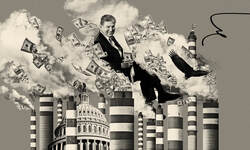 Borrowed from that great asset, https://www.theguardian.com/us-news Borrowed from that great asset, https://www.theguardian.com/us-news (NB: In the first version of this, I forgot to mention the heroes and victims of Trump's rampage -- the police officers who were left to fight it out, without adequate weapons or backup, by that murderous thug of a President. Some of them were present in the front row, mute and injured witnesses to the massive evidence being presented. There were also two guys who just happened to get caught up in the rampage, now professing sorrow, without a trace of remorse or wisdom. One couldn't even find a jacket and tie to appear before Congress. The other guy tried to apologize to Harry Dunn, the brother who had to swat vermin with his bare hands that day. Dunn is a wonderful person. To his credit, he gave the man a blank stare and let him go his way. The witness still has to answer to his wife, who was present on Tuesday. Good luck with that. My belated thanks to the officers who were set up to fail and be injured, by the President of the United States. GV)
I have become addicted to the Jan. 6 committee hearings – hanging on every response, every nuance, every face in the audience. I have not been this involved in any television spectacle since The Sopranos, all those years ago. In fact, I am deeply afraid this series will end the same way The Sopranos did – by going dark, with no final conclusion for the chief character. Tony Soprano and Donald Trump. Guy from Jersey, guy from Queens. When the Sopranos series ended so abruptly – with Tony, Carmela and A.J. eating onion rings while waiting for Meadow to park the car – I understood what author David Chase had done. He let all of us construct our own ending. Okay. Deep down, it was only a TV series, and in some strange way I saw Tony as a family man (as well as a bully and a murderer and gangster), so I concocted my alternate coda for the family – new identities and fingerprints, a swanky home in Boca Raton, the kids in college. Another chance. I could concoct another persona for Tony but I cannot imagine another life for Trump--or his admirers. As of now, I bet there might even be six or seven middle-of-the-road Republican voters around the country who have bothered to watch or read the hearings and have decided Trump is a vile criminal, after all. I have the terrible feeling that AG Merrick Garland will sleepwalk through the final Biden years, and Trump will talk his way out of everything, the way he did starting near the family bunker in Jamaica Estates. In the meantime, I watch these hearings the way I watched the Sopranos. Don’t call me. Don’t text me. I’m a total Fan Boy for Liz Cheney the way I once was for Edie Falco, and I hang on the patriotic history lessons from Rep. Jamie Raskin the way I did on the scowling gangland sagacity of Steven Van Zandt, Tony’s consigliere. This current series is the best education in civics I have ever seen on TV. Every member of the panel reminds those of us who are listening what democracy means, or should mean. I have tried not to rage at the revelations in each of these made-for-TV “hearings,” keeping my cool as people revealed the ways Trump garroted and knifed and shot democracy. I held back my rage on Tuesday watching a weasel lawyer named Cipollone try to suggest he had undergone a miracle cure – seen the light, praise the Lord – although it was clear the committee’s lawyers had suggested he might want to testify, or else. The weasel was 18 months late. However, there are still surprises, particularly last week from Cassidy Hutchinson, the 26-year-old aide to another weasel, Mark Meadows. (What is it with people like Mark Meadows, Lindsey Graham, Kevin McCarthy and the aforementioned Cipollone – they need a strong Fuhrer type to make them feel whole?) Anyway, Miss Hutchinson was still young enough, had not been around politics long enough to have her heart corrupted, and she had the visceral understanding that bad things were going on down the hallway and she shamed the weasel Meadows into at least acknowledging the dark intentions of Trump. Cassidy Hutchinson has taken on the aura of a latter-day Paul Revere, sloshing through the slimy bogs of Washington, shouting, “The weasels are coming! The weasels are coming!” Someday there may be a Cassidy Hutchinson stamp – put me in for a 100-pack. I did lose it on Tuesday, however. My position watching this horror show has come from the Iris DeMent song – “No Time to Cry.” “Working overtime to make sure that I don’t come unglued.” But then Rep. Stephanie Murphy from Florida, one of the panel members I knew least, gave her short summation of the day. She is, she revealed, from a family that escaped by boat from Vietnam. She praised the United States of America, and she linked the committee’s work with the ideals of truth and democracy….and to my amazement I started to weep, great big salty tears rolling down my face, and I turned to my wife (who does not hold back her rage at these thugs) and I found myself blubbering, “They don’t get any of this, do they?” I was referring to the enablers and hustlers and explainers and deniers and downright racists who supported, and continue to support, Donald J. Trump, who is worse than anybody in “The Sopranos.” The Sopranos merely murdered and stole. These people are worse. Unless the Justice Department steps up, I can foresee another show going dark. (This is the way an American hero acts.) Some people become heroes once. John McCain was a hero four different ways, by my count. He was a hero in wartime and he was a hero during the stench of Donald Trump and Mitch McConnell. That is why I am celebrating the news that he has posthumously been awarded the Presidential Medal of Freedom. The medal is going to deserving people like --Sandra Lindsay, a nurse who lives in the same town I do, who became the first American to be inoculated against Covid. --Simone Biles, the Olympic champion who excelled despite being assaulted in one form or another by a rogue doctor, the gymnastics federation, and the FBI -- Megan Rapinoe, who caught my eye with her brazen sorties as a star soccer player, and then caught the eye of the world with her support of female athletes and LGBTQ causes. ---And so many others. John McCain touches my heart in a special way because he was a perpetual hero, and also a very human public figure. I met him once in his office in 1999, when we talked so easily during a break in a Senate investigation of the Olympic movement. (He had just savaged an American Olympic official who sounded too vague to the senator.) I began with a question about something else: my wife had sat next to one of McCain’s service buddies on a long flight to Asia. The man told her how the senator was quietly leading some vets to raise money and goods and shipping them to, yes, Vietnam – the same country that had broken his arms during a long and cruel captivity. In his office in 1999, I asked McCain why he helped Vietnam. His answer was an eloquent shrug with his damaged shoulders -- a gesture of modesty. John McCain was also a hero during his doomed campaign in 2008 when Republican voters vilified Sen. Barack Obama as “an Arab.” John McCain snatched the microphone back with the response that his fellow senator was a good man, a family man. McCain asserted that he would make a better president, but he told his own people that they need not worry about the loyalties of his opponent. That is the instinctive act of an American political hero. Or used to be. The fourth time John McCain was a hero was in 2017 when it was apparent he was dying of cancer. With a post-operative scar on his head, John McCain strode, military-like, to the floor of the Senate, where his colleagues were voting whether to scuttle much of the health-care program known as Obamacare. At 1:39 AM, John McCain faced the twisted Mitch McConnell and jabbed his right thumb downward, in a decisive gesture straight from the Roman Colosseum. No repeal. Ongoing health care for millions. That, for me, is the act of a hero. The recipients of the Medal of Freedom are always varied. I became interested in the medal in 2011 when Stan Musial, whose biography I was writing, was among the honorees. Through a Washington insider friend, I received a special guest pass, (more access than a journalist) and mingled with the guests and the recipients, including a fading Stan the Man. I watched President Obama appear, so knowing and enthused about each of the recipients and their fields. I got to chat with Bill Russell, still fierce-looking, and tell Yo-Yo Ma how much I admired his diverse cello repertoire On the way in, a Washington lawyer pal of mine was showing me a photo of himself with a very young President n 1961, and a handsome lady spotted the photo and said, “That’s my brother” – meaning President Kennedy. She was Jean Kennedy Smith, another recipient that day. After the ceremony, Yo-Yo Ma sat in with a Marine string quartet in the lobby, and his pal President Obama stood near him, and on the way out, “back to work.” the President extended his hand to people nearby, and one of them was me -- an act of grace I will never forget. So, yes, I count the Presidential Medal of Freedom as one of those great American honors. Now the medal is going to other deserving recipients. There is no A List and B List. But I will say, in my heart, the recipient who thrills me the most this time around is John McCain, four-time hero. In the midnight hour on a murky Saturday night in late October of 1986, Shea Stadium was going mad.
A squiggly grounder by Mookie Wilson had somehow kept the Red Sox from winning the World Series that night – and fans were screaming, and nearly a dozen New York Times writers were pounding away at their laptops, shouting into phones, bustling noisily to update their early stories for the last print deadline of the evening. Enlightened cacophony. The sports editor, Joseph J. Vecchione, sitting behind us in the pressbox, was coordinating with the staff in the office, making dozens of decisions, on the spot. Then it was over. We had gotten it done, on deadline. A young Times news reporter, doing spot duty to cover fan madness, police activity, etc., watched the sportswriters (so often maligned as “the toy department”) do their jobs. When things quieted down, the young reporter said casually to the sports editor, “Wow, that was impressive,” or words to that effect. And Joe Vecchione said drily: “We do it every day.” If Joe had added, “Kid,” he would have sounded just like Clint Eastwood in “The Unforgiven.” That professional pride epitomized Joe Vecchione, my friend and advisor in my early days of writing the sports column. Joe passed Friday evening at 85, after years of suffering from Lewy body disease, cared for by his wife, Elizabeth, a wise and devoted nurse. They are parents of Elissa Vecchione Scott and Andrea Vecchione, with three grandchildren: Joe’s aura of family man was clear to people around him. He was a boss with values. I got to know him as a terse, decisive voice on the phone, in the 70’s, when he was an editor in the photo department, and I was a news reporter. Sometimes I was at breaking news and I had to coordinate with the photo editors. Joe was authoritative and efficient. Then he was plucked by Abe Rosenthal and Arthur Gelb to help form the new SportsMonday section, and he was there in 1980 when sports editor LeAnne Schreiber recruited me to be a reporter, filling in for Red Smith or Dave Anderson here and there. When LeAnne moved on, Joe became sports editor, and when Smith died in 1982, it was Abe Rosenthal’s decision to hire a new columnist, and it turned out to be me. Here is where the kindness and shrewdness of Joe Vecchione took over. I had been conditioned by 10 years as a Times news reporter, to keep any trace of myself out of the copy. Give sources. Quote authorities. No opinions. That was the old, gray NYT – and I was one of the foot soldiers, thoroughly indoctrinated. As a columnist, I knew the subject matter, and could write and report, but I was trying too hard to find a voice, hinting at my opinions. I was being too cute. Joe had some advice (and I paraphrase:) “Be yourself. Tell us what you think. People want to know how you feel, what you know, what is right and wrong. Don’t hold back. This is the way things are going these days. You have freedom.” He removed a decade of thoroughly valid reportorial rules, freeing me up to be a columnist. Joe also had an instinct for hiring and enabling good people, hiring columnists Ira Berkow and Bill Rhoden, relying on deputy editors like Bill Brink and Lawrie Mifflin, and he backed up his columnists. I benefited from this in 1990, when I was writing columns from the World Cup of soccer, held in Italy. The young American team, in its first appearance in 40 years, managed a taut 1-0 loss to the Italian team – a huge accomplishment. But I pointed out that Italy did not have great strikers – that is, players gaited to score goals from up close – and I wrote this was because their great national league imported scorers from Germany and Argentina and Brazil. I wrote: “The home-grown players do not develop the knack of scoring. Mussolini once lamented that his was a nation of waiters. It is not stretching the truth to say that Italy is currently a nation of midfielders.” The next day, the sports department got a call from an Italian-American reader who felt using the remark attributed to Mussolini was prejudicial. (Fact is, I love Italy and root for the Azzurri, except when they play the U.S.) The person in the office, taking the call, told the reader that the sports editor was okay with my comment. And who is the sports editor? “Joseph J. Vecchione.” That pretty much ended the conversation. Joe could be tough, and he had to make a lot of decisions. I once was whining in the office about something or other, and Lawrie Mifflin, the deputy sports editor and loyal friend of Joe’s and mine, told me, in effect, “You have no idea how much he has to handle every day” – including complaints from leagues, teams, player unions, sponsors, agents, public officials, fans, to say nothing of staff members. In Joe’s regime, we let it fly, and Joe fielded the complaints, kept most of it from our ears. Joe was sports editor for a decade, then moved back into the mainstream of the paper. He retired at 65 and the editors promptly brought him back to help the transition to the new building a few blocks away. Over the years, I was impressed by the masthead names, the serious people (some of whom condescended to sports personnel), who were his social friends. They trusted him – for core values, like honesty, like thoughtfulness, like culture. That is no small statement about a Times official, my friend, who helped move the sports department into the future. (Any insights/anecdotes about Joe? Please add them in Comments, below.) It all came back to me – my telephone interview with the popinjay proprietor of a doomed gambling den.
Watching the Jan. 6 hearings on Monday, I heard former toadies Bill Barr and Bill Stepien talk about the emptiness of Donald J. Trump, who lost the 2020 election and then went blank when aides tried to tell him it was over. Could not take in information or considered opinion, even when it was meant to help him in his chosen field, that is to say, the presidency. Then I remembered -- the good old days of 1999, when Trump was not trying to wreck the United States of America but instead was merely bringing down the Trump Taj Mahal in Atlantic City. In addition to siphoning money from people with a gambling jones, the Taj also ran boxing cards, for people who like to see others bleed. Always hustling his faux-golden appearance, Trump was up front when a boxer named Stephan Johnson was beaten unconscious and lugged off to the hospital where he died within hours. As an abolitionist toward boxing (tempered by liking so many boxers I met), I wondered if the death of Stephan Johnson might touch some primitive form of Trumpian conscience. So I made a call to Trump's gatekeeper, asking for an interview. They knew me. I had grown up not far from the Trump Tara, knew his older brother Fred (a nice guy), and had also met Ivana Trump through a New York Czech connection. Plus, I had seen Ivana – twice as smart as her husband – try to coach the man through press sessions regarding the New York Generals football team he owned. I could see he did not have a grip on details. Now I was wondering how he could explain his part in boxing, in the death of Stephan Johnson. Over the phone, he was dim-wittedly vague, coming up with cliché after cliché about boxing: ''I love boxing, but it's a dangerous sport.” ''I hate what happened. 'It's something you have to get through. I think boxing is an alternative.' In some cases, the boxing ring is better than anything else.'' ''You have to understand that we do not sanction the fights,'' Trump said. ''That is done by the New Jersey State Athletic Control Commission. All we are is the venue -- and fighting is popular. Every fight sells out. We have other things like gymnastics; they don't sell out. All I know is, boxing sells out.'' I’ve talked to other boxing people who made more complex arguments for boxing. But Trump was inarticulate. Flat. Empty. Didn’t know. Didn’t care. The world has since seen what is really inside -- the raging egocentric sending the deluded and the deranged out to do battle at the Capitol, telling them he would be along shortly. Now we are getting sworn testimony from people who served him, like Barr, who back-stabbed his old law and church pal Robert Mueller. Even Bill Barr had enough of Trump. Solid Republican campaigners and lawyers and advisors describe him as not able to follow their advice that it was over. Sounds like the guy on my phone in 1999 -- the good old days, when he merely wrecked his businesses, and his family. How far would Trump go? His inability to know truth has even scared off Ivanka Trump, the oldest child, the one he sent off to mingle with European leaders, much to their disdain. This committee showed taped testimony from Ivanka, whose furtive eyes darted from side to side, looking for the nearest escape hole. *** In this spectacle of a nation in trouble, I found two positive scenes: --The former head of the Fox election evaluation grew, Chris Stirewald, was asked how his group on election night, 2020, had analyzed the incoming returns in the pivotal state of Arizona. With visible pride, Stirewald told about the experts from both parties, who reached the judgment that absentee ballots, counted later, would swing the state to Joe Biden. Fox beat the opposition – that is a big thing in journalism -- and they were correct. As a journalist, I felt great pride in what this guy and his staff had done. For his proven expertise, the network of Tucker Carlson fired him. *** --One of the panel members, Rep. Zoe Lofgren of California, noted that Bill Stepien had been scheduled to give live testimony Monday, but had rushed home when his wife went into labor. (With little notice, the committee staff pulled out vital segments of his previously taped testimony.) I was touched when Rep. Lofgren noted that Stepien had every right to go home to be with his wife. Let me just add that if the other party were running a hearing, and that happened, I would not expect such a note of grace *** (My interview with the inarticulate Donald Trump, when he was merely a New York joke, in 1999.) https://www.nytimes.com/1999/12/12/sports/sports-of-the-times-a-front-row-witness-to-death.html 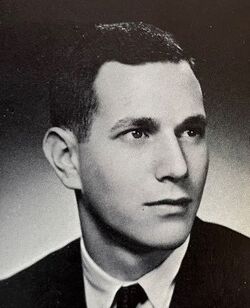 Stan Einbender, 1960 Hofstra yearbook. Carol Studios. Stan Einbender, 1960 Hofstra yearbook. Carol Studios. Stan Einbender, Jamaica ’56 and Hofstra ’60, passed on June 10. He had turned 83 on June 1, and had been in failing health for months, lovingly cared for by his wife, Roberta. This is a hard one for me to put together because Stan and I were in the same school for nine straight years -- Halsey Junior High and Jamaica High in Queens, then Hofstra College in Hempstead. Then Stan went to dental school and served as a dentist as a captain in the Army at Fort Lewis, Wash., and settled into his practice in New Hyde Park, marrying Roberta Atkins, helping her with their two children, driving around to dog shows all over the place, in with their English Mastiffs -- a big guy showcasing his big pets. We became much closer in the past two decades, as old Hofstra basketball and baseball guys (and one aging student publicist) got together at Foley’s in NYC. I would drive into the city and back, sometimes with other front-liners, Donald Laux and Ted Jackson. Basketball was our common denominator. Stan had a great souvenir of his season as a 16-year-old senior on the Jamaica varsity -- a scar on his forehead, from the city tournament in the old Madison Square Garden when he was hammered by Tommy Davis of Boys High. When Tommy became a star with the LA Dodgers, I would remind him that an endodontist on Long Island was looking to get him back. 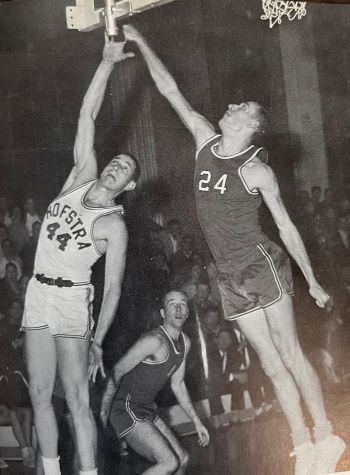 Stanley in 59-60 season. Stanley in 59-60 season. I was at courtside on a sleepy January afternoon in 1960 when Hofstra lost on a long basket by Wagner at the buzzer. It turned out to be the only loss in a wonderful season – 23-and-1, but not good enough to get into a post-season tournament. Half a century later, we caught up with the villain who had beaten Hofstra with that long jump shot – Bob Larsen and a couple of teammates met a few old Hofstra guys at Foley’s, and I wrote about that in the Times., https://www.nytimes.com/2012/03/01/sports/ncaabasketball/52-years-later-recalling-a-shot-that-sank-a-season.html In our old age, basketball was the link. Stanley had two season tickets at the Hofstra gym, right above the scorer’s table, and sometimes he would invite me. He became friendly with the coaches, first with Mo Cassara, then with Joe Mihalich, two basketball lifers who loved our old stories about the memorable coach, Butch van Breda Kolff, the old Knick. (Crude and also insightful, Butch was oddly formal, often calling his players by their full first names—Donald, Curtis, Stanley. As the publicist, I was “Grantland.”) Every October, Joe would invite us to a practice, let us sit behind the basket, give us frank insider critiques of his team. He called Stanley “Doc.” For one afternoon, my guys were part of the team, part of the school, again. I remember at one October practice, the star of the team, a shooting guard at 6-foot-3, also from Queens, was chatting with us, and was politely bemused that Stanley was the star rebounder at the same height. (I wrote about those sweet annual visits to our alma mater.) https://nationalsportsmedia.org/news/my-alma-mater-thrills-some-old-players- Just before the pandemic, Stan stopped getting around, because of Parkinson’s disease and other problems. We would talk on the phone and he would talk about Roberta’s art work and how well she took care of him…and proudly about their family: son, Harry, who had taken over the endodontist practice, (“better hands than me”) and his wife Macha and their children, Max and Remy, and Stan and Roberta's daughter, Margaret Morse, and her husband Richard and their children, Olivia and Henry. He always knew what they were doing. When I visited them last week, Roberta was masterfully managing a hospice operation. (I never heard him complain about his bad breaks with health, and he was always upbeat about the home care from aides like Kenia.) We sat by his hospital bed and we talked about the old days and our dwindling Hofstra guys, and his Yankees and his Rangers….and I praised how inclusive he was about his basketball world. This is what I told him: A decade ago, my wife and I were visiting our friends, Maury Mandel and Ina Selden up in the Berkshires, and Maury’s kid brother Joe and his wife Jean were also there. I suddenly blurted to the younger brother, ”Hey, I know you – from junior high school.” Turned out, Joe had been in the same class as Stanley – and had played on the same class team (Stanley was also on the school team.) I ostentatiously pulled out my cellphone and called Stanley: “I got Joe Mandel here, from Halsey.” They started chatting, more than six decades later, and Stanley told him, “You were a good point guard on our class team.” As any old schoolyard player knows, there is no higher compliment than being praised by a college star. Generous guy, Stanley. Then they started talking about the girls in their class. We continued that conversation the other day -- basketball and girls in our grade -- and for a few minutes, it was very nice to be 13 again. ** (It's so nice to see comments or emails to me, from old friends. Ken Iscol from junior high. Jean White Grenning and Wally Schwartz from Jamaica. A lot of the Foley's gang. Just to drop a few names. Roberta (I knew her brother, Jerry Atkins -- in grade school!) has held things together, admirably. The funeral is Monday at 11:30 AM at Beth David Cemetery, 300 Elmont Rd., Elmont, N.Y. 11003.) For the moment, please feel free to remember Stanley…and say hello to Roberta and the family… here…. They are monitoring the lovely comments here on this site. Thanks. GV A 300-pound man is gliding down the river in a canoe. His appearance, his shabby belongings stuffed into every corner, are straight from the last thousand homeless people you saw, under the bridge, on the subway bench. But Dick Conant did it differently. He had the intellect and knowledge of the med-school applicant he once had been. He could paint. He carried hard-covered books in his canoe, and some days he just lazed by the river and read. He also could read the river, could decipher the maps, could extract knowledge from other riverman (and more than a few riverwomen) he met on his missions along the Intracoastal. People on the banks, people seeing him lug his jumbled belongings through the streets, stopped to talk to him, were stunned by his intellect, by his knowledge, and also by his tales of a girlfriend named Tracy waiting for him back there somewhere. People never forgot him. America – free-falling into cruel anarchy these days – is built upon wanderers. It’s in our blood. Tom Sawyer and Huck Finn and Jim. Daniel Boone and family making their way through the Cumberland Gap in 1769 as if it belonged to them instead of the natives. Lewis and Clark, ditto, toward the Northwest. John Ledyard’s canoe trip down the Connecticut River from New Hampshire – in 1773. The guy hitch-hiking on Route 66, singing to himself, a regular Chuck Berry. Dick Conant struck a chord. Sometimes the people on the riverbank, meeting this strange hulk, ingesting hot sauce the way other people suck on a Tic-Tac, grew quiet, as if confronting some inner wanderer. Hmmm, they thought. Hmmm. That’s what Ben McGrath, a writer for the New Yorker, thought a few yards from his home on the Hudson River, where the Dutch once encountered the Lenape. McGrath was fully nested, job, wife, growing family, but he was fascinated by this articulate and charismatic giant who secured his canoe near McGrath’s backyard. Hmmm. In the interests of journalistic/literary curiosity, McGrath chatted him up, and vice versa. And when the big man pushed off, McGrath went with him, in a way. Dick Conant was canoeing downriver for perhaps the last big jaunt of his wandering days, and McGrath tried to stay in touch. Then one day on a bad stretch of North Carolina river, the canoe turned up, but not the man. An authority found McGrath's name scribbled on a river map and called him, and McGrath wrote a haunting piece for the New Yorker. He was now into it, big-time, collecting every name and phone number and e-mail address Conant had scribbled somewhere. The only name and address missing was that of Tracy, the lost love Conant always said was waiting for him back in Montana, or somewhere. Now, McGrath has written a touching book entitled “Riverman: An American Odyssey,” recently published by Alfred A. Knopf, including photos of Conant, and photos of a few of his paintings. How did a college soccer player (Albany State) come to be most at home on rivers? McGrath writes about the large and complicated Conant family (he likes every Conant he meets) and all have their version of what happened to kid brother Dicky: too many drugs, too much booze, the late 60’s. (The book is worth it for the meeting at Woodstock between Dick Conant and Jimi Hendrix.) There is a one-sentence allusion to the young boy's quick exodus from a church summer camp: inexplicably, McGrath lets it sit there for many chapters before another quick allusion or two as to why Dicky left that camp, and never seemed the same. That human mystery aside, “Rivertown” is a touching ode to all river towns, most of them falling apart, a century past their prime, but inhabited by people still in touch with the water rushing past. I’ve known rivers (see below): Hannibal, Mo., two visits in the late ‘50s: Louisville, Ky., when my young family rode our bikes alongside the Ohio; as a news reporter, accompanying ecologists on a canoe glide on the Youghiogheny, a tributary of the Monongahela; Uncle Harold Grundy’s cottage in Bath, Maine, a few steps from the Kennebec he had dredged before WW II -- I never appreciated river towns as much as I do now, via the mobile Conant. McGrath solves no mysteries. He writes that Conant either sighted or imagined Tracy, a latter-day Dulcinea, an American Beatrice. Conant drank and danced gracefully in river-town bars, telling people how he was soon going soon to be with Tracy; women were charmed by his eloquent faithfulness; but he never got back. (Unless he’s there now.) ("Cathy, I'm lost, I said, though I knew she was sleeping ("I'm empty and aching and I don't know why." --- "America," Paul Simon.) McGrath writes the book half expecting Conant to ring him from some river town and fill him in on the empty canoe, about his recent adventures. The alternative is to slip onto the river in a suitable craft, just to see what’s out there. *** From the classic poem by Langston Hughes, "The Negro Speaks of Rivers," Gary Bartz has recorded his version: “I’ve Known Rivers.” Why can’t I commit? This is my dilemma, doctor, as a recovering sportswriter. Essentially, I root for four teams – the New York Mets, the two US national soccer teams, and also Italy’s soccer team, a passion going back to 1982, when Italy won.
(in 1998 in Aix-en-Province, I twitched my head so badly when Roberto Baggio hit the cross-bar against the French team, on a day off for me during the World Cup. “They’ll kill you,” my wife said, of the French patrons of the pub.) I know sports fans who need to have a team in every game they watch. Does it make the event more exciting? I don’t know. I do know that I could not crank up a favorite in the Champions League final between Real Madrid and Liverpool on Saturday. I had reasons to root for Liverpool. Me mum was born there, but throughout her long and educated life she had no interest – no knowledge, I suspect—of the Liverpool team. (“We were really from Southampton,” she would say. Her father was posted in Liverpool for a short time by the White Star Line, before moving to the States.) If I were going to root for Liverpool, it would be because of the informed passion of our oldest grandchild, named George, who has been storing up soccer details since he was 2 or 3 and he could beat me in the FIFA electronic game. A decade or so ago, George committed to Liverpool, and then he switched into an even higher gear when they acquired Mohamed Salah, the Egyptian will-of-the-wisp, one of the sweetest (is that even a soccer word?) athletes I have ever watched, almost a holy man. I tried to commit to Liverpool for the final, but I also have the strong memory of my college pal, Ward Wallace, who moved to Spain for a PR job in the mid-60s, As a business person in Madrid, he became a loyal fan of Real Madrid, the New York Yankees of Spanish football. Ward had season tickets to Bernabéu Stadium and eventually moved to a smaller flat right near the stadium. In 1991, he and I had an Italian lunch al fresco across the street from Bernabéu. Ward passed a few years ago, but his passion for Real has made it impossible for me to root for Barca or Atletico, etc. On Saturday, during the final, I daydreamed of all the Champions League finals I have seen, although never in person: the majority in L’Angolo, the wonderful and vanished bar on Houston St., run by Pino-from-Sicily. The games and years blur but I can see stirring rallies by Manchester United and AC Milan, in L’Angolo, in the company of soccer pals like Massimo and Ricardo and Logan and Denise. I’ve watched a final at the flat of Paul Gardner, who has taught me so much, along with our friend and colleague, Lawrie: I believe I’ve watched a final or three in the company of Lawrie and hubby Duncan-from-actual-Arsenal, and Roger-the-Chelsea fanatic. Most finals blur, but the best I ever saw was by Didier Drogba, who carried Chelsea on his broad back, playing the full field, offense and defense. In the time of Covid, I settled into the TV cave in our basement on Saturday, with grandson George texting me regularly, praising the new Liverpool weapon Luis Diaz. Meantime, I was caught up in my impressions of three decades of covering soccer: *-Carlo Ancelotti, now a venerated coach of Real, but in the 1990 World Cup in Italy, he was a heady midfielder for Italy with a constant smile, despite injuries. *-Thibaut Courtois, the Belgian keeper for Real Madrid, who always seemed a bit wooden to me when he played in England, but on Saturday he was stoically repelling shots by Liverpool – the Man of the Match, George and I agreed, even before the final whistle. *- Conversely, Mo Salah seemed to be trudging in mud, after a brutal schedule of national and club matches, a nearly criminal demand on these great players. “He needs the summer to recover,” my grandson texted. *- My neutrality remained steady, but a grand memory took over when the TV crew caught a glimpse of Zinedine Zidane, the French artiste who, in 1998, performed the best individual final I’ve ever seen – in this very stadium, Stade de France -- controlling the ball with his feet or gliding into the air for two, count ‘em, two header goals. My wife was there that day, because kind friends had a spare ticket, in the lower stands, with a great view of Zidane, as he floated. On Saturday, on the TV, there was Zidane, now a former Real Madrid coach. unable to hide his narrow marksman eyes inside a white hoodie, and accompanied by his striking wife, Véronique, a dancer and model. The camera did not linger long, but the sight of Zidane et femme seemed to call up the memories of 1998 – a grand omen for Real Madrid. -- Real Madrid did win, 1-0, as Vinicius Jr., flitted past Trent Alexander-Arnold, the wandering right back. “We go again next year,” my grandson texted. I was neither elated nor sad, because I did not have a team in this match, but I had watched some of the best players in the world. Was I missing something by not having a team? I really do not know. Ever since Roger Angell passed last week, friends have been e-mailing about how great he was, and asking how well I knew him.
Let me say, he was grand company in a pressbox watching a game. I always thought he seemed liberated by his mid-life discovery, his strange hobby, writing about baseball. It began as his left-brain, right-brain activity, when he wasn’t editing temperamental fiction writers or conducting in-house business at the New Yorker or dealing with the vicissitudes of life. He enjoyed the hell out of this other world, and it showed. He also loved paddling his kayak or sailing along the Maine coast when he wasn’t writing about Pete Rose or Reggie Jackson or the baseball denizens of the Pink Poodle, his hangout in Arizona during spring training, or editing what any sportswriter would respectfully call “real writers.” Now and then, he would pop into Yankee Stadium or the Mets’ ballpark, without the weary pack-mule trudge of the beat writer or old-fashioned sports columnist (been there, done that) lugging a laptop, expected to produce profundity on deadline, halfway through the season, 81 up, 81 to go, plus the endless autumn trek. As we all said in our alibis for why we were not Roger Angell: we had deadlines. While we were pecking away, he could hang back and chat up a ball player who grasped that this older guy knew the game and was not looking for a few quick quotes. I admired the working friendship he developed with, let’s say, Dan Quisenberry, a submarine-style relief pitcher with the Kansas City Royals, who was cool enough to explain his technique. Roger also took seriously the first female writers in the press box and – gasp – the locker room, who were professionals, just like men, if you can imagine. So, how well did I know him? I got off to a dumb-ass start. It must have been 1968 when I sat next to a guy near 50 and we introduced ourselves and he said something about “New York” and I thought he meant the new weekly magazine so I wished him luck with the new publication. To his credit, he did not correct me, nor did he back away from this dolt. Later I deduced that he wrote for the New Yorker and began subscribing, not just for his occasional baseball pieces but for the great eclectic literacy of the magazine. I still subscribe to the New Yorker in the age of Editor David Remnick – a great guy who started as a daily sportswriter, for goodness’ sakes. The arrival of the New Yorker—the print version – is a highlight of this pensioner’s life. Did I learn anything from Roger Angell? The best part was the way he thought independently and observed the sub-marginal things and had the time and space and license to elaborate. Plus, he had talent -- could play with themes and details, knowing exactly what he was doing. He was a model, but then again, in our collective world, no journalist should lack for models. My parents were journalists and I came along in the pioneer Newsday sports department in the 60s, with crusty old editors and the new breed of chattering younger types, known as Chipmunks. And then there were books that made me want to write longer and better. In the early 60s, I sought out “Bull Fever” by Kenneth Tynan, a London drama critic who roamed to the corridas of Spain, or “Cars at Speed,” by Robert Daley (son of the noted Times columnist, Arthur Daley), who had bolted to Europe to write about the Grand Prix – and life in the old world – and ignited my wanderlust. In the same period, I read “Night Comes to the Cumberlands,” by Harry Caudill, a lawyer from an old Kentucky family, whose lament for the defaced mountains made me want to go to Appalachia and see what was left. So many great writers, out and about, dealing with current issues, from their heart, from their eyes, from their brains, writing at entertaining length. Over the decades, I was always happy to spot Roger Angell in the press box. I cannot remember what we talked about, but it was fun. When I retired at the end of 2011, I kept up by phone when I particularly loved something he had written, and I called when he had a death in the family. When my wife and I started visiting her elderly uncle in coastal Maine, I called to tell Roger how much we loved his other world. My wife says I should have told him that some Angells popped up in her sprawling family tree from New England in the 17th and 18th Centuries. Finally, a confession: Every year, readers would look for Roger’s annual Christmas poem, hailing and pairing people with exotic and yet topical names. For decades, every December, I scanned the poem for my name, but it never appeared. I never told him how sad I was. Other than that, Roger Angell was, just as you imagined, great company as well as great reading. * * * In case you missed: Obit by Dwight Garner: https://www.nytimes.com/2022/05/20/sports/roger-angell-dead.html Tyler Kepner’s appreciation: https://www.nytimes.com/2022/05/23/sports/baseball/roger-angell.html And a labor-of-love sampling of Roger’s work, from Lonnie Shalton, lawyer in Kansas City and a true lover of baseball: http://lonniesjukebox.com/hot-stove-192/  My vintage iPod includes most-played singles -- Eliza Gilkyson from the great all-female CD tribute to Greg Brown; some from the classic "Casa" CD, plus Caetano Veloso's version of "Billie Jean." My vintage iPod includes most-played singles -- Eliza Gilkyson from the great all-female CD tribute to Greg Brown; some from the classic "Casa" CD, plus Caetano Veloso's version of "Billie Jean." I. The iPod. I read the news the other day, oh, boy. Apple is discontinuing the legendary iPod – probably because the company created such a useful, durable machine that it is no longer profitable. The iPod made it possible to store up 1,000 individual songs in a “pocket-size rectangle with a white face and polished steel frame weighed 6.5 ounces,” as the NYT wrote – with the operator able to file them in categories or playlists -- every person a DJ. I will never forget when my kids gave me one, more than 20 years ago, and gave me some lessons until I got the knack of downloading from an Apple computer -- entire CDs. I still remember New York’s valuable and eclectic John Schaefer on FM radio, playing an entire CD, “Casa,” songs by Antonio Carlos Jobim, played by pianist and arranger Ryuichi Sakamoto, cellist Jacques Morelenbaum and singer Paula Morelenbaum, three talents uniting in Portuguese and English. I had it downloaded within days. My “collection” ranges from Yo-Yo Ma’s vibrant “Silk Road Journey” to the gentle classical trio of “Butterworth, Parry, Bridge,” from the signature opener music from “The Sopranos” to Nina Simone singing “Ne Me Quitte Pas.” I have not added to the collection in a decade for two reasons – (a) I am totally out of current music, to (b) I don’t have much access to the Apple laptop that could catalogue an entire CD in a few minutes. Best discovery: I was never a fan of the “Bee Gees” until I discovered that my go-to album for a brisk two-mile walk on the soft track at the high school is the soundtrack from “Saturday Night Fever” – an old guy thinking he’s John Travolta strutting under the El in Brooklyn or in the Saturday night disco. The article in the NYT about the end of the iPod did not mention repairs/upgrades. I don’t trust companies so I will have to be gentle with the iPod…and all those songs. II. Vinyl Lives! The other day WQXR played the classic version of “Peter and the Wolf” with kindly old Uncle Lennie (Bernstein, that is) narrating the Prokofiev score. My wife said, we used to have a “record” of it…50 years ago or so. I riffled around in my closet and found a couple of cardboard boxes filled with old records, including “Peter and the Wolf,” and put it on the Fisher turntable (circa 1975 – with Amazon still supplying a needle every decade or two. My exploration of the Vinyl hoard led to two records that dated me back to the summer of 1982, the Barcelona regional of the World Cup. My journalist friend Alex Martinez Roig invited me out to dinner in a suburb of Barcelona – and introduced me to the music of Joan Manuel Serrat – a baritone philosopher/critic – and later Alex gave me an album. That same week, I was alone on my birthday, and there were no games, so I bought a ticket to an open-air concert in a Barcelona park, by Maria del Mar Bonet, a Majorcan folk singer. She and her band gave a great show, and on the way out I asked a couple to recommend their favorite album of hers, and the next day I dropped into El Corte Inglés and bought it and schlepped it home in my luggage. Since rummaging through my vinyl, I have played these two thoughtful Catalan artists, and through the magic of a Fisher turntable, I feel it is summer in Barcelona, and I am turning 43. *** But in fact, it is 2022, and Serrat’s brief against the madness is as current as, well, of course, Russia invading Ukraine. (English translation here:) https://lyricstranslate.com/en/quien-corresponda-who-corresponds.html III. Memories of Kate and Anna. The Thursday Times informed me that Martha Wainwright has written a memoir. Good grief, is she really 46? But the part that really got me was the NYT’s casual mention that Martha’s mother, Kate McGarrigle, “made 10 albums as part of a duo with her sister Anna before her death in 2010.” Sacré bleu. That’s like saying the New York Knicks had a pretty decent team back in the early 1970s with people you might have heard of, named Frazier and Reed and Bradley and DeBusschere. I’m sorry, but Anna and Kate McGarrigle (and sometimes their more homebound sister Jane) were “The McGarrigles,” a haunting sassy mixture of Irish and Quebecoise – who wrote bilingual songs about love and sex and politics and long sisterly walks in the snow. My point about this talented tribe: beyond the talent of Kate’s former husband, Loudon Wainwright III, their son Rufus Wainwright, and their daughter Martha Wainwright (and never, ever, forget their talented Brooklyn-born band member, and philosophy professor, Chaim Tannenbaum) there were “The McGarrigles,” mostly Anna and Kate. The Times article by Emily Gould makes Anna and Kate sound like footnotes to the present, but they were wonderful, and many, many thousands of us still miss them, badly. * * * I could recommend dozens of their songs, but for these purposes, I go with Kate pounding the piano and singing her dear heart out on “Stella By Artois," (ignore the youtube mis-spelling) about a love affair that lasted just about as long as their band’s trip “from France clear through to Galway.” I dare you not to shed a tear. Just in time for Mother’s Day and Father’s Day comes the ickiest New York Times series I have ever seen -- not that the Times’ coverage by the great reporter Nicholas Confessore and colleagues is icky but because the subject matter is so icky.
The Times ran a tree-part series about Tucker Carlson, the angry widdle man who apparently is bigger than O’Reilly, bigger than Limbaugh, bigger than Hannity. And in the very same Sunday issue was a Review article about J.D. Vance, the Yale-Law-School money-man who became famous for criticizing Appalachian people without pointing out the corporate and political causes (I’m talkin’ about you, Commodore Manchin.) Vance is now, goodness gracious, running for the Senate from Ohio. And in the Monday Times is a column by Michelle Cotttle pointing out that the hottest campaigner in Ohio – better teeth, slimmer figure, more elephant-part trophies – is Donald Trump, Jr., not the doughy, grumpy-looking J.D. Vance. Yuk. What do these three worthies have in common? The answer came to me: dysfunction, broken sons lashing out at the world without a tangible speck of compassion or solution. The political party that once boasted of family values is now being represented by angry boys left adrift by parents. According to the Times’s reporting, Carlson was abandoned by his mother, whose dissolute ways led her to Europe, leaving him to claim at an early age that this had nothing to do with him. The evidence is that young Tucker drank and groused his way through his teens and into his 20s, and when he found a persona it was a critic of the left. According to the Times, Vance’ mother had the same weakness now raging through the strip--mined, job-bereft, opioid-glutted region whose sons and daughters have migrated northward into Ohio. (I spent many years writing from Appalachia and its extensions, and wrote two books about the region, and feel great bonds with the many good parts as well as the bad.) The Times reports that Vance’s mother has been clean for seven years. God bless her. When does he go to work on his own bravado and anger? If he is running for the Senate, when does he grow a bit of compassion? The third member of the testy trio is young Trump, who apparently gets more attention than Vance out on the trail. He apparently stumbled around during college, and had several blocks of time in his youth when he did not speak to his father, who was giving the world a critique of his latest hottie, and making a habit of putting his hands on women. As it happened, I had a few glimpses of the Trump ménage before the frightening White House years. (We grew up half a mile and seven years apart; his late brother Freddie was a nice guy. We have since sampled Donald Trump’s emulation of his crooked-dandy father, his disdain for his homebody mother.) When I came back to Sports in the early 80s, Trump owned a low-rent football team in New Jersey called the Generals. He knew nothing about his team – the coach, the players, the rules – which he would prove at occasional press opportunities in his gilded hotel lobbies. His alarming inability to focus on details was pointed out by his blonde wife Ivana sitting next to him, and interjecting, in her lush Czech accent “No, Donald, Walt Michaels is the coach, not the general manager.” Ivana would patronizingly correct Trump about this and that, and at some point they were divorced. Whatever the three children really felt, if anything, they eventually knew which side to take, which has led them to today. So now one child of dysfunction campaigns for another child of dysfunction while a third child of dysfunction yammers at immigrants and minorities and liberals. What a trinity, so filled with pain and anger, passed on by an earlier generation. As Mother’s Day and Father’s Day approach, it is time to give thanks for parents who stuck it out, who were a presence, who tried, who disciplined when they could, who gave, who loved, in their ways. (Mom and Pop, I never thanked you enough. You were always on our sides.) It is human to feel compassion for these three broken men, whose pain is on such public display. May they process their rage, may they learn to do less damage. May they heal. But more important, may this country heal, somehow. Omigosh, Mike was there! That was my reaction while electronically poking around online files and saw this angle of Jackie Robinson sliding toward Yogi Berra in the 1955 World Series. The umpire ruled Robinson had stolen home, but to the end of his days, Yogi would levitate loudly, to dispute that call. But I’m not writing about baseball today. I’m writing about photographers like my late friend Meyer (Mike) Liebowitz, who passed in 1976 but lives forever in the stock of photos, now being included in a digitizing project by the Times. (That project was described in a two-page spread in Sunday's Metropolitan section. See link below.) https://www.nytimes.com/2021/11/04/books/reading-around-new-york.html In the dozens of times Mike and I worked together on news – not sports – stories on Long Island, he never once mentioned that he was one of the photographers arrayed around Yankee Stadium that epic day. (John Rooney of the AP caught the slide/tag that, to this day, proves nothing.) Mike Liebowitz one of dozen photographers I got to know – and admire – on our assignments together. This digital project reminds me that one of the under-described relationships in journalism is somebody with a pad and somebody with a camera, going on assignment, watching each other’s back. I was in my mid-30s and Mike was surely twice my age when we were paired by the random needs of the Photo Desk, Sometimes I would be in his car because it held his equipment. Once we were chasing a politician allegedly visiting an estate in Nassau County’s gold coast. Down a long driveway, we knocked on a door and were told to take a hike, so Mike backed out the driveway – and we nearly got T-boned by a speeding car. Another time we were doing something way out on the North Fork (a project to save the fading potato farms?) on a glorious early October day, and Mike was driving along an untended beach and the tide was high, so I asked Mike if he had 20 minutes to spare, which he did, so I stripped down to my skivvies and dove into the warm, placid waters, and then we proceeded due west. In that two-page spread in the Times’ Sunday metropolitan section, there are 12 vintage photos about reading in public. What touched me was that I worked with just about all the photographers – Jim Wilson, Keith Meyers, Marilyn K. Yee, Fred R. Conrad, Andrea Mohin, Chester Higgins, Jr., and William E. Sauro, who did a lot of sports. And that doesn’t include other Times pioneers like Michelle Agins (who one Christmas Eve popped over to my family dinner and took a treasured photo of four generations) and Sarah Krulwich, who has become an institution with her photos of everything Broadway. Or dapper little Ernest Sisto, who worked on the field back in the day of bulky Graflex cameras, and would get a discreet signal from his compagno Phil Rizzuto when the Scooter was about to drop a bunt. And then there are my two pals from the 1994 Winter Olympics in Norway – Paul Burnett, who took photos of the presumed winner, Nancy Kerrigan, and Barton Silverman, who was snapping Oksana Baiul, who went later. Barton was – and I am sure still is – a force of nature. He got roughed up covering the 1968 Democrat convention in Chicago, and in 1996 he was nearly arrested in Atlanta for trespassing in the new Olympic park in downtown Atlanta. (I tried to warn him.)
I know I am omitting a dozen or two Times photographers, but I want to discuss another facet – free-lance photographers. I don’t know what it is like now, but when I was a news reporter based in Louisville, the Times used great photographers from the Courier-Journal in their spare time (my late friend Ford Reid, for one), and also a free-lancer named Kenneth Murray, a true son of Appalachia from the Tri-Cities area where Virginia and Tennessee meet.
I met Ken at the first funeral after the terrible Hyden coal-mine disaster in Eastern Kentucky, Dec. 30, 1970, and he kept going to funerals for most of the 38 miners. Later he began working with me all over Appalachia. In March of 1972, we got together when a coal-mine’s lethal lake of waste water broke loose and drowned 125 people along Buffalo Creek, W. Va, one rainy Saturday morning, with no warning from the coal company. Ken and I decided to look around for more of these “slurry ponds” and got caught in some deep woods, by a few guards flashing pistols. As we tried to explain it was all a big mistake, Ken whispered to keep edging our way down to the state road, to public land, which we did, safely. Some of my best times were spent out on the road somewhere, with Tom Hardin of Kentucky, Don Hogan Charles of the NYT, Gary Settle of the NYT and Seattle, Chang Lee of the NYT, John McDermott my soccer buddy from San Francisco and now Italy….and more. And the news about the digital project makes me happy that the Times will preserve the work of its own artist-journalists, in its way, a hall of fame for these people who became legends to me.  George and two buddies from Pennsylvania are visiting an exchange student pal and his family in Turkey, and getting a great tour. This is the rock formation in Cappadocia, with its ancient catacombs and eerie wind-blasted towers, which George pronounced as "Martian -- beautiful and slightly spooky." We told him we had stayed in the hilltop hotel in our epic visit in 2012, On Wednesday he was at Topkapi and Blue Mosque and Hagia Sofia. We expect a full update when he gets back. I worked myself into a tantrum last Friday when Max Scherzer was making his first start for the Mets. I wanted to see the game, plus hear what the Mets’ knowledgeable TV triumvirate of Cohen-Hernandez-Darling had to say about it. Then I found out that Major League Baseball had farmed out this game to some Apple outlet, with unfamiliar broadcasters. Yes, the very same Rob Manfred operation that now welcomes gambling commercials. (Coming next year: commercial patches on uniforms. Baseball goes Nascar.) I knew enough to instantly switch to Good Old Howie Rose, of course – baseball is a great sport for radio, with lifers like Rose -- but people who could not access WCBS-AM radio (upstate New York, for example) were stuck with the gimmick -- noisy strangers hawking silly “probability” statistics but clueless about the daily workings of the Mets. Baseball clearly has no shame. * * * Totally by coincidence, I have been reading a biography of one of the great baseball broadcasters of all time, Red Barber, who introduced my brain, my heart, my ears, to the Brooklyn Dodgers, starting in 1946. My earliest baseball memories are riding around Queens with my father, with Red Barber on the car radio, and listening to night games in our back yard, via a radio that occasionally emitted shocks from a faulty connection in the garage. Red Barber’s melodic southern accent calling a Jackie Robinson foray on the third-base line, on a warm summer night, outdoors? The best. Later I got to know Red in the Yankee Stadium press room, in the 60’s, after he had switched over to the “big ball park in the Bronx” – his alliteration, not Mel Allen’s. Walter Lanier Barber had respect for the game itself, and for the intelligence of the listener, and for the rules and codes of life. I did not know, back then, that Barber was also a lay preacher, but what I did know was that he stood up for the right thing, by his standards, and he offered a measured response when things did not go the Dodgers’ way. He was not an overt rooter, did not refer to ”we,” did not make excuses for Dodgers. On the final day of the 1950, the Dodgers had Cal Abrams thrown out at home, and then lost the pennant on a home run by Dick Sisler. I can remember listening in my family house, as Barber delivered what I took as a sermon of sorts, that life would go on, there would be another season. It helped me get through another Yankee World Series – a piddling issue, to be sure, but he gave hope; there were more important things in life. Now I know Red Barber better, through a valuable new book, “Red Barber: The Life and Legacy of a Broadcasting Legend,” by Judith R. Hiltner and James R., Walker, published by the University of Nebraska Press, which often issues serious sports biographies and histories. Red Barber deserves this adult biography. The book takes me to Barber’s southern childhood, his hard-working father and idealistic mother, a very segregated world, and even Barber’s youth as an entertainer doing – gasp – minstrel music, mimicking stereotypes of Black music. As the young and very ambitious man, morphed into a broadcaster, he was lucky to be instantly taken with a young nurse named Lylah Scarborough, also very southern, but with a difference: she had played with Black children, and had treated Blacks in her profession. The book shows how Miss Lylah prepared Barber to adjust to the advent of Jackie Robinson in 1947, and also to enjoy the culture of the city. He never denied it: he was a work in progress, with help from his mother and his wife. Barber broadcast many sports, eventually on national networks, but his specialty was baseball, first in Cincinnati, then in Brooklyn. He had a code: he could drop folksy sayings (“rhubarb,” “catbird seat”) in his southern cadence, but he had to remain an adult on and off the air. He took his cue from his father, fighting for better contracts; he also learned from Branch Rickey, the innovative, educated and religious boss of the Dodgers. Barber knew he was speaking to Dodgers’ fans but he did not root – was not a “homer,” in the press-box slight. He also did not go along with certain broadcasting ways: calling the 1947 World Series, he told the national audience that Bill Bevens of the Yankees had not given up a hit with two outs in the ninth. The superstitious blamed Barber after Cookie Lavagetto broke up the no-hitter but Bevens assured Barber, heck, it was Bevens’ own fault for walking so many hitters. When a new owner named Walter O’Malley took over the Dodgers, Barber continued to tell the truth. Once he informed the radio audience that the opposing infield was playing deep for a double play because Carl Furillo, the Dodgers’ stalwart right fielder, was notoriously slow. Any true fan knew that already – the great Dick Young had labelled Furillo “Skoonj,” a slang Italian reference to snail -- but O’Malley dropped a snide remark on Barber the next day. Not long afterward, Barber was calling Yankee games, remaining his own man, once noting the sparse crowd (413 paid) for a late-season Yankee game. More broadly, as the book emphasizes, Barber’s austere presence became out of style. Time to move on. Barber spent his final decades back in Florida, still a national figure, from his Friday morning NPR “Morning Edition” conversations with Bob Edwards, plus writing and speaking and eventually caring for Miss Lylah when she developed Alzheimer’s. He died in 1992 and she in 1997. Sports broadcasting has continued to evolve. I would submit that the booth of Cohen-Hernandez-Darling bristles from the individual gifts of all three, starting with honest calls from Cohen and his enlightened questioning of his booth mates -- former ballplayers, a genre that Barber disdained. Hernandez offers the perspective of a fiery on-field leader and Darling offers the perspective of a Yale star who does his homework. My guess is that Red Barber – who was always looking for another protégé like Vin Scully -- could have worked with all three of them. Baseball fans will enjoy this serious biography of an evolving adult who set a high standard for broadcasters, players and fans. Red Barber could get excited. Here is his classic call of the game-saving catch by Al Gionfriddo in the 1947 World Series -- watch Joe DiMaggio make a rare show of frustration. Barber's exclamation of "oh....doctor!" was not a stock phrase of his. He just blurted it.
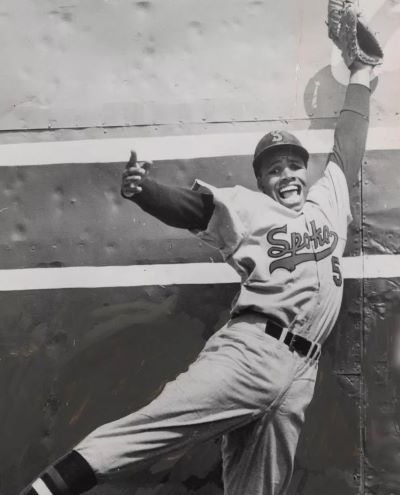 Tommy Davis in his short stint in minors at Spokane. Tommy Davis in his short stint in minors at Spokane. Tommy Davis always remembered where he was from. Whenever the Mets would play in Los Angeles, the assorted chipmunks and walruses of the large NYNY media corps would tromp over to the Dodger clubhouse to schmooze with the team that used to play in Brooklyn. As soon as he sighted familiar faces – or heard familiar Noo Yawk accents – Tommy would turn to his teammates and announce: “Hey, these guys are from my hometown.” And he would chat with reporters about one thing or another. Tommy Davis was always a New Yorker at heart This comes across in the lovely obit in the Times, by Glenn Rifkin, that describes Tommy and Sandy Koufax celebrating with a made-in-Brooklyn victory dance in the clubhouse after a 1-0 victory. One thing that would always come up – that is, I would bring it up – was the damage Tommy did to one of my best friends from school. It went back to March of 1956, in the PSAL basketball playoffs, then held in the old Garden between 49th and 50th streets. Tommy was one of the mainstays of the Boys High team (now Boys and Girls High) and he showed an eye fore talent by cajoling his pal Lenny Wilkens, a feathery guard, into playing one semester for Boys, but Wilkens --now a Hall of Fame pro player and coach-- was out of eligiblity by the playoffs. In a second-round game, Boys was playing Jamaica High, the defending city champion from 1955. One of the Jamaica regulars was my pal since the seventh grade, Stanley Einbender, a very solid forward. Stanley was waiting for a rebound when, from the upper stratosphere of the Garden, came Herman T. Davis, Jr., of the Bedford-Stuyvesant Davises. On his way downward Tommy happened to clip Stanley on the forehead, producing blood, and requiring Stanley to leave the game for medical attention. Boys won -- it would have won anyway -- and Stanley became the rock of a great Hofstra team from 1957-60, with a not very noticeable scar on his forehead. Later he became an endodontist and we are friends to this day. In our 20s, whenever I ran into Tommy – particularly in the Dodger clubhouse, with other Dodgers listening – I would tell the tale about how he clobbered my pal in Madison Square Garden, and that my friend was now a dentist looking for revenge. Tommy loved that story. Tommy Davis showed great perseverance in playing on, after a gruesome broken ankle while sliding when he was a young star. His gait was affected, but as the obit notes, the designated hitter rule, that began in 1973, kept him in business. Whenever I got too snooty about the DH being a “gimmick,” I thought of Tommy Davis struggling to run the bases, and I toned it down a notch or two. They never met, but one wintry Sunday a decade ago, Tommy was in Queens, at a memorabilia show, signing his autograph. I greeted him, and ostentatiously took out my cellphone and called Stanley, an hour east on the Long Island Expressway and said, “Here’s your chance.” But Stanley couldn’t make it, for one reason or another. I would have loved to be there for a second meeting of these two brothers of the backboard. * * *
AN APPRECIATION OF TOMMY DAVIS (AND BROOKLYN) FROM MY FRIEND JERRY ROSENTHAL (great shortstop at Hofstra, Madison High and Milwaukee Brave farm system): George, thanks for remembering Tommy Davis, one of Brooklyn’s greatest athletes! I played against Tommy in the Parade Grounds League back in the mid-50’s. Tommy played center field on the Brooklyn Bisons, alongside Lenny Wilkins. I played third base on the Brooklyn Avons. My James Madison High School teammate, Teddy Schreiber played shortstop on the Avons. Those were the halcyon days of amateur baseball in Brooklyn. The Dodgers were going strong and baseball was the only game in town! Life was good! The Parade Grounds is located adjacent to Prospect Park. In those days, it was made up of of 13 diamonds which were fully occupied on weekends - from 8 AM to 6PM. Diamonds 1 & 13 were the showcase fields usually featuring the best senior division teams ( ages 16-18 ). Sometimes a playoff game would draw up to two thousand fans along with a dozen scouts. The Bisons were a long established Black team in the Parade Grounds. Make no mistake about it, there were no integrated teams back in the 50’s! However, the Bisons did have a few white ballplayers on their club. How ironic! After my final high school season in 1956 , I was invited to Ebbets Field to try out for the “Brooklyn Rookies,” a promotional team that traveled around the Metro area playing highly rated amateur teams. Davis had already signed and was playing at Hornell , N.Y. in the New York Penn League. I didn’t make the Dodger Rookies team which was a major disappointment! However, two weeks later I was invited to attend a tryout at the Polo Grounds. Willard Marshall, the scouting director of the hated New York Giants, asked me if I was interested in signing a class D contract. I was thrilled by the offer, but college was in the offing. As a minor leaguer in the Braves organization (61-63 ) the only guys I followed in the Sporting News were Tommy Davis, Koufax, Joe Torre, Bobby Aspromonte and Joe Pepitone, all Parade Grounds alumni. While playing for the Yakima Bears in ‘62 in the Northwest League, I realized that Tommy was having an incredible year with the Dodgers! .He looked like the second coming of Willie Mays! Another great year in 63’ and then the devastating broken ankle injury. What a tragedy! The lack of recognition and the gross underpayment of Davis was emblematic of the way ball players were treated before the monumental efforts of Marvin Miller and Curt Flood! I wish today’s MLB players were more aware of the history! The fact that Tommy hung around the major leagues for another 13 years, shuttling from one club to another is testament to the toughness and resiliency he developed back in Brooklyn on the hardscrabble fields of the Parade Grounds. Best, Jerry ( US -Algeria, 2010. The Golden Age -- So Far. )
The last time we saw the American men’s soccer team, the players were trying not to lose by six goals or more at Costa Rica. They lost by only two, which gave them license to celebrate qualifying for the World Cup, the more they thought about it. However, the tepid performance lingers in the mind, particularly during Friday’s draw for the 2022 World Cup in late November in that soccer powerhouse of Qatar. And just before that, there was the 0-0 non-event at Mexico, in front of many “Fuera Tata,” signs, urging the firing of its manager. With images of recent American futility, it was hard to get too worked up while watching the World Cup draw on Friday. In the three group matches, the Yanks will play England, Iran and one of three teams emerging from a goofus survivor scrum later this spring – Scotland or Wales or Ukraine. With help from the Injury Gods or the Karma Gods or the Logic Gods, it is easy to imagine the U.S. youth of tomorrow advancing into the second round. But….but…..but. I’ve witnessed Eight World Cups, some of them stinkers by the Americans: a sodden loss to Iran in Lyon, France, in 1998, runs replays in my mind. And then there was the wretched 2-1 loss to Trinidad and Tobago in the final qualifier to keep them from qualifying for the main 2018 tournament. Then again, the U.S. has obviously developed more talent and depth in the past decade, including some with serious soccer pedigrees like Gio Reyna, whose father, Claudio, played the best international games of his life in the Americans’ stirring run to the quarterfinals in 2002. With Claudio distributing the ball, the Americans scored one of their epic dos-a-cero victories over Mexico in 2002. And then there was the desperate full-field stampede goal from Tim Howard to Landon Donovan to Jozy Altidore to Clint Dempsey, rebound goal by Donovan to beat Algeria in 2010, and the gallant play by keeper Tim Howard in the heart-breaking loss to Belgium in 2014. So there is some very good history for the Americans in seven consecutive World Cups from 1990 to 2014. But after the U.S. missed the 2018 World Cup, I can work myself into finding flaws with this young squad that, to its credit, survived the regional scrums to qualify: Goalkeeper. The U.S. qualified for those World Cups behind four superb keepers: Tony Meola, Kasey Keller, Brad Friedel and Tim Howard, all so good they sometimes provoked controversies over which keeper to play. With all due respect to Zack Steffen, he looked slow, as if his back were still stiff, in the loss to Costa Rica. So I would suggest that position is wide open. Striker. The best moments in the past generation came when the ball was served forward to Dempsey, Brian McBride or Donovan, who knew how to convert. The U.S. has run a vanload of strikers through the regional long march, but none of them displays the poise and position, the downright self-centeredness and nastiness, of the old lot. Hard Man. Every squad needs an enforcer, who is willing to put a hurt on opponents even if he accumulates a yellow card now and then. I was a big fan of Jermaine Jones, German-born, with American schoolyard ferocity. Weston McKennie, out of action in the recent matches, has the temperament but he has too much skill to task him with dirty work. I’d make sure Kellyn Acosta is on the flight to Qatar; he has the disruptive “dark skills,” according to Dempsey, now in the chattering class on the TV programs. I find no fault in Gregg Berhalter, the U.S. coach, a soccer lifer. (An unpenalized handball deflection by a German defender kept Berhalter from being a hero in the 2002 quarterfinals.) He is part of the best age of American soccer – so far. Now he will have time to blend these talented young players to see if they can reach the level of the previous generation. I called her Pretty Girl whenever she sat by my side. She must have known I was smitten, because she let me pet her and talk to her even if her immediate family members were right there. She was a Blue Merle Australian Shepherd, a highly desirable breed, tooled to chase sheep up a steep incline, sorting out dawdlers. She could muster her speed and power when let loose in safe terrain but she was gentle and domesticated in Dave and Joelle’s house, near us. She had beautiful color and soft hair and a sleek face. She could have been a model.  Max Scherzer Max Scherzer She was named Blue, for her right eye, alongside her darker left eye. Exactly -- just like Max Scherzer, the traveling pitching star, currently with the Mets. When I see Scherzer blowing hitters away, I think of Blue. (The web says 5 per cent of Blue Merle Australian Shepherds have one blue eye, a genetic variant.) (The web also says a small percentage of humans has one blue eye, from a common ancestor 6-10,000 years ago.) I never saw Blue show a temper, even when Isabel’s cat or Greta’s cat sauntered by. Blue tolerated the felines, shared food space and floor space. She was beautiful; she had nothing to prove. I am not a dog person (and my wife has major dog allergies), but I did love our highly neurotic and foul-smelling cocker spaniel named Ebony, adopted while I was out of town, and good sport that I am, I walked her and washed her, and in turn she cuddled at my feet when I was reading or napping. I always referred to her as “my last dog,” but I still get sad when I think about her (and think I smell her, two decades later) whenever I lie down on my couch for a nap. Most of my family loves dogs. My mother adored Taffy, whom she walked for exercise while gallantly fighting back Multiple Sclerosis, and my sister Janet and brother Peter both have dogs these days. Laura and Diane had Griffey, a springer spaniel who could haul driftwood out of heavy surf north of Seattle. When Laura was a sports columnist out there, she knew and liked Ken Jr., who asked why she named her dog Griffey. “Annoying….and cute,” she said, and Ken seemed okay with that. More recently, they had a little Lhasa Maltese mix, whom I nicknamed The Yapper, in homage to Donnie Iris and the Jaggerz and their hit song, “The Rapper:” The Yapper used to snap and snarl at me, even when I was feeding her or taking her for a walk. But as she got older and wiser, she sat at my feet and let me pet her. Peter and Corinna had Ginger, an English bred Yellow Lab whom Corinna took for long pre-dawn walks in the neighborhood, and when Ginger was fading, she was replaced by Finnbar Octavian, whom they also love. David and Joelle adopted Blue 10 years ago from the great North Shore Animal League, near us in Port Washington. She was said to be six months old, but maybe she was older, because she was so mature. In her first years, Blue had the energy of a teen-ager. We’d go in the back yard and I would boot a soft soccer ball into a far corner. and she’d bolt to get it, as if it were a wayward sheep. A couple of years ago, I sent a ball into a corner and she gave me a baleful look, one blue eye and one dark eye, as if to say, “Uh, I don’t do that stuff anymore.” Either way, she was still beautiful. A month or two ago, she stopped eating much, and began losing weight and her coat became splotchy and she mostly sat and watched. Her family sought good veterinary care, and the verdict was stomach cancer. While Blue could still get around, David took her to Bar Beach, where she loved to romp at low tide, and Dave posted it on Twitter. I came by to hug her one more time, and on Friday family members received a photo from Dave, of an empty collar with the name "Blue" on it. Marianne wrote: "She’s running up the mountain, free again. ❤ to her, on her way." Speaking of hills to climb again, may I offer this song, by Alice Gerrard, sung by Kathy Mattea.
For Blue: "Agate Hill." https://www.youtube.com/watch?v=Adm_rbwCZJU The terrible stuff is all over the news but baseball, as always, is a welcome diversion. It was on television and good old the radio this weekend. Pick your team; mine is the Mets. I make no apologies for the hours I spent following Good Old Howie Rose on the radio for two days and the Three Amigos on the tube on Sunday. The Mets presented their first exhibition Saturday, with Rose back in the booth after shutting down last season because of illness. He sounded himself in his haimish Queens tones (so familiar to my central Queens ear.) Rose and his radio sidekick, Wayne Randazzo, noted that spring training was delayed to mid-March as the hard heads of Major League Baseball nearly throttled their thing, but now MLB is going after all that good, clean gambling money, while clubs are playing catchup – opening days in less than three weeks. As the Mets played the Washington Nationals in West Palm Beach, Rose and Randazzo discussed the big change in rules this year – the National League has gone the way of the designated hitter after 49 years of the gimmick solely in the American League. (The New York Times has an interview with Ron Blomberg, the first DH for the Yankees back in 1973. Blomberg likes it, and why not? It is his claim to fame.) Somewhat to my surprise, Rose, 69, said it was time for “traditionalists” to accept the DH. Most pitchers can’t hit, anyway, and even those who can are in danger of being injured by putting their hands and wrists and elbows in the way of a wayward pitch. The deGrom Argument. Jacob deGrom has been my best reason for keeping the tradition, based on the good hitting pitchers over the decades – Don Newcombe of my Brooklyn Dodgers, Bob Gibson, Don Drysdale, Tom Glavine, Madison Bumgarner. (Shohei Otani, the slugging pitcher, is not just from Japan; he is from some other planet entirely.) However, deGrom is also the best argument for getting elite pitchers out of harm’s way. He was an infielder in college and is a lithe fielder on the mound, and he can also bunt and swing for power. He kept getting hurt last year, ending his season way too early, possibly because of the stresses of hitting a fastball with a wooden bat. Who wants to see Jacob deGrom’s career end early? Howie Rose was spot-on, in the opening innings of the first radio exhibition of the spring. This traditionalist gives up. I picked up the Mets’ Sunday game on television, from their camp in Port St. Lucie – Gary Cohen, Keith Hernandez and Ron Darling, warming up for their 17th season together – so savvy, so entertaining. Their show showed a clip of Lindsey Nelson doing an intro for the Mets’ historic first camp in 1962, and praised the earlier Three Amigos, Nelson and Bob Murphy and Ralph Kiner. The current Amigos let us know winter was truly over by discussing the free agents who have moved around for salaries that seem unbelievable to me. They also discussed the legacy-killing act of Robinson Cano, who is back from a second drug suspension, the knucklehead. The Amigos also talked about how clubs have to prepare fast. Hernandez, that great first baseman, noted that Francisco Lindor has a bad habit of underarming his throws on slowly-hit grounders. They speculated whether Michael Conforto could still be signed for this season --- a really good point, since he seemed a victim of the Mets' organizational anarchy last year. And Cohen, who flew to San Diego to fulfill his winter gig with Seton Hall basketball, raved about the stunning double victory by fellow jersey school, St. Peter’s. 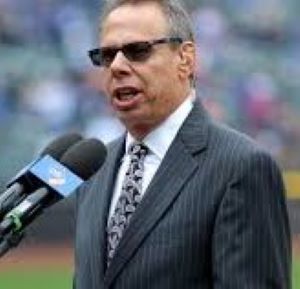 Welcome Back, Howie Rose Welcome Back, Howie Rose True confession: just like the ball players, I am not ready to go nine, so I dozed in mid-game and caught the last segment on the radio with Good Old Howie Rose. He was talking about the deterioration of most of the Mets’ hitters last year, as the old-time batting coach, Chili Davis, got fired, replaced by two minor-league coaches, who, according to Rose, were undercut by analytics types going where they don't belong – buzzing in the ears of major-league hitters. That won’t happen again, Rose said, and I hope he’s right. In the final innings, Rose noted that the new manager, Buck Showalter, re-arranged the batting order of the anonymous late-inning subs, and imitated Bob Murphy, who used to explain the machinations of Casey Stengel or Bobby Valentine by enunciating, “I’m….sure…he…has…his... reasons.” “Come on, April 7,” Rose urged, referring to Opening Day, when the March of the Subs will no longer happen. He observed the fans, making their getaways into the choke point on the dreaded Peacock Blvd. Randazzo said he knows a short cut, albeit illegal, through a nearby gas station – the late-inning preoccupations of spring training. All seems normal. Welcome back, baseball. ---- * -- Homage to the Terry Cashman standard. And for all radio baseball fans: |
Categories
All
|
